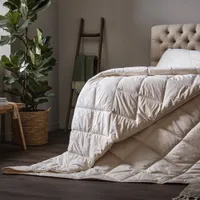The best duvets you can buy – I've tested over 25 options to find the best quality duvets for year-round use
As Ideal Home's Sleep Editor, I’ve slept under more than twenty-five duvets to find the best quality options that are worth the price. After 10,000 hours of home testing, these are my top recommendations


This guide was updated on 02/01/26 to include the latest deals on the best duvets we've tested.
Why you can trust Ideal Home

- 100 years of industry expertise
- 10,000 hours of sleep product testing
- 25 duvets tried and tested at home
The best duvets make a real difference to the quality of our sleep. That’s because our overnight temperature has a massive effect on how deeply we sleep. Get our warmth levels right, and we’re setting ourselves up for better quality rest.
However, what I’ve learnt over the past four years of testing bedding, is that one duvet doesn't fit all, and it’s not just about getting our duvet tog right. (Tog is shorthand for how warm a duvet is, with 10.5 tog being a good warmth for autumn and spring in the UK, 13.5 tog a good warmth for winter, and 4.5 tog a good option for hot summer nights).
The materials our duvet is filled with also matter. If we’re a hot sleeper, the best duvet for us is likely a wool-filled duvet that will offer good breathability and temperature-regulation. If we're a cold sleeper, insulating feather-and-down will be our friend. And if we're after affordability or a duvet we can bung in the washing machine and tumble dry easily, a synthetic microfibre duvet is our best bet.
As Ideal Home's Sleep Editor, I spend my days (and nights) testing all types of bedding, from reviewing the best mattresses to testing over twenty-five duvets from Simba, Emma, John Lewis, M&S, Dunelm, and many more.
This guide features only the best duvets I’ve tested during that time. That way, you don’t need to waste money before finding the best fit for you and your bed. I slept under each duvet included in this round-up for a minimum of a week (often far longer), to test out its temperature regulation, breathability, snuggle-factor, and ease of care, and only the cream of the crop made the grade.
Best January duvet deals
This is the best wool duvet I've tested, thanks to its excellent temperature regulation, 30-night sleep trial, and washable design. However, it's expensive, so now is the time to invest.
If you prefer a synthetic duvet that's easier to care for (and a *lot* more affordable!) then this bamboo and microfibre mix duvet is the best I've tested. It feels a lot more luxurious to sleep under than most polyester options.
Best duvets 2026: shop now
- Best winter duvet: Woolroom Deluxe Wool Duvet in Warm
- Best all-seasons duvet: scooms Hungarian Goose Down Duvet
- Best budget duvet: M&S Supremely Washable Duvet
- Best wool duvet: Woolroom Deluxe Wool Duvet
- Best feather and down duvet: Soak & Sleep 90% Hungarian Goose Down Duvet
- Best synthetic duvet: Panda Cloud Duvet
Best winter duvet
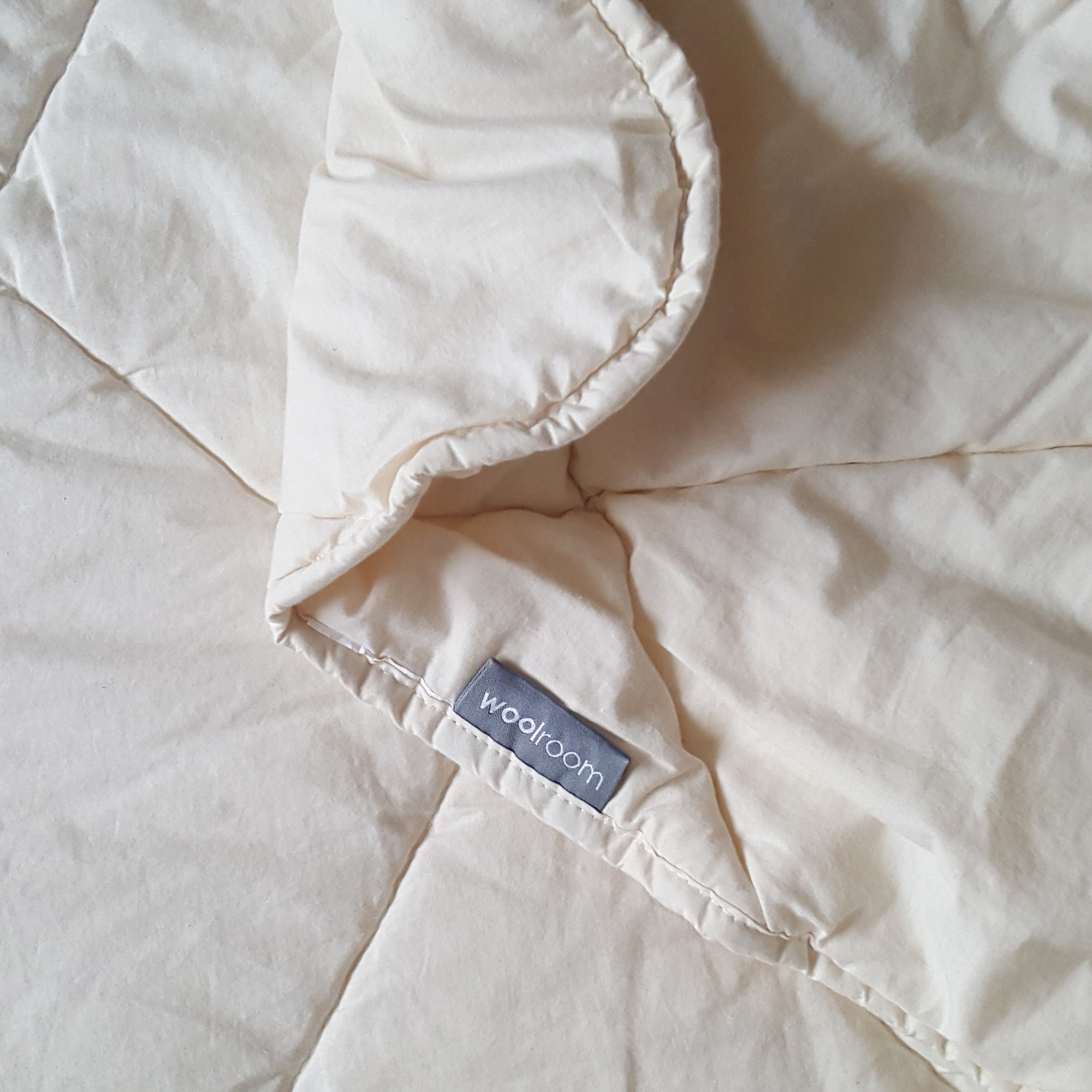

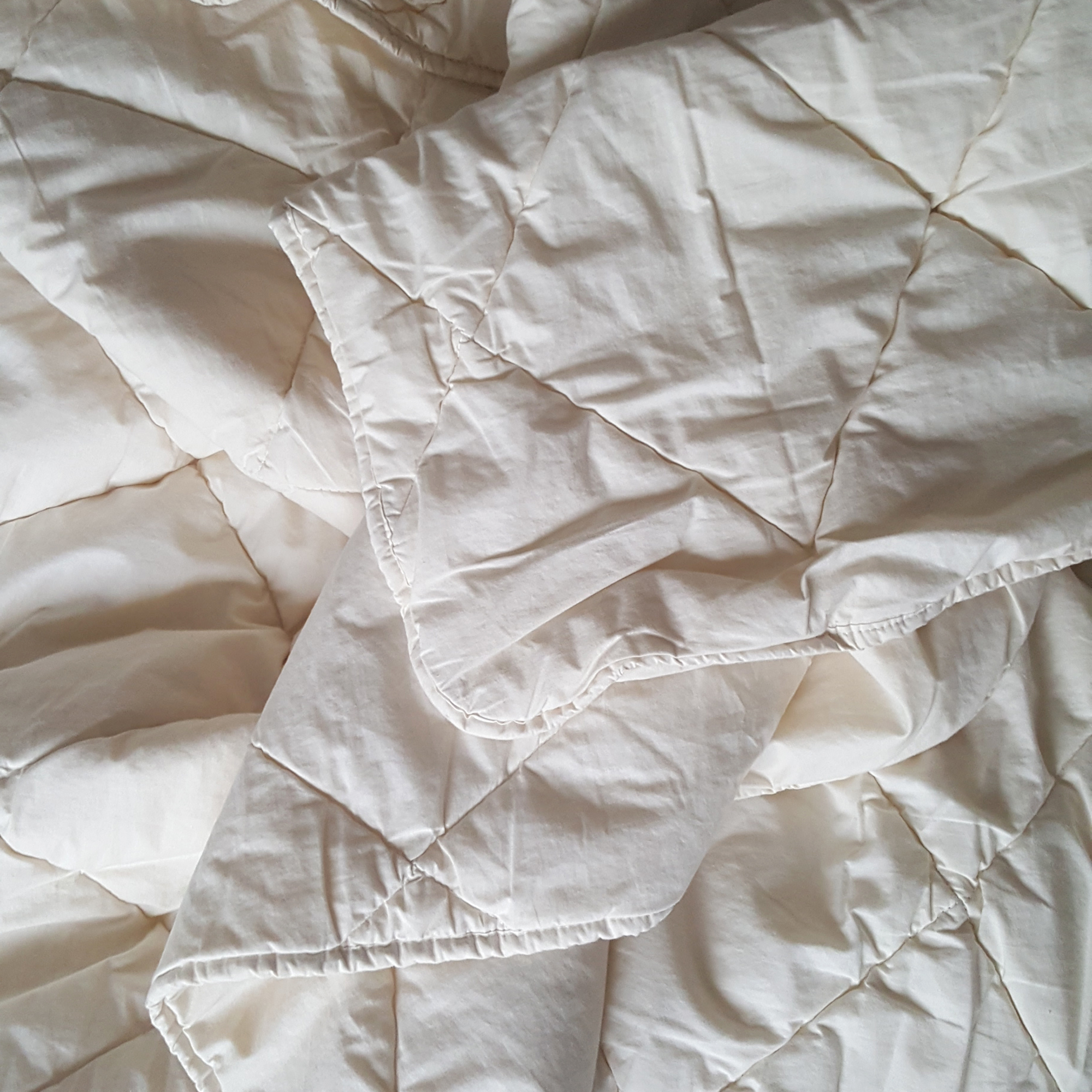
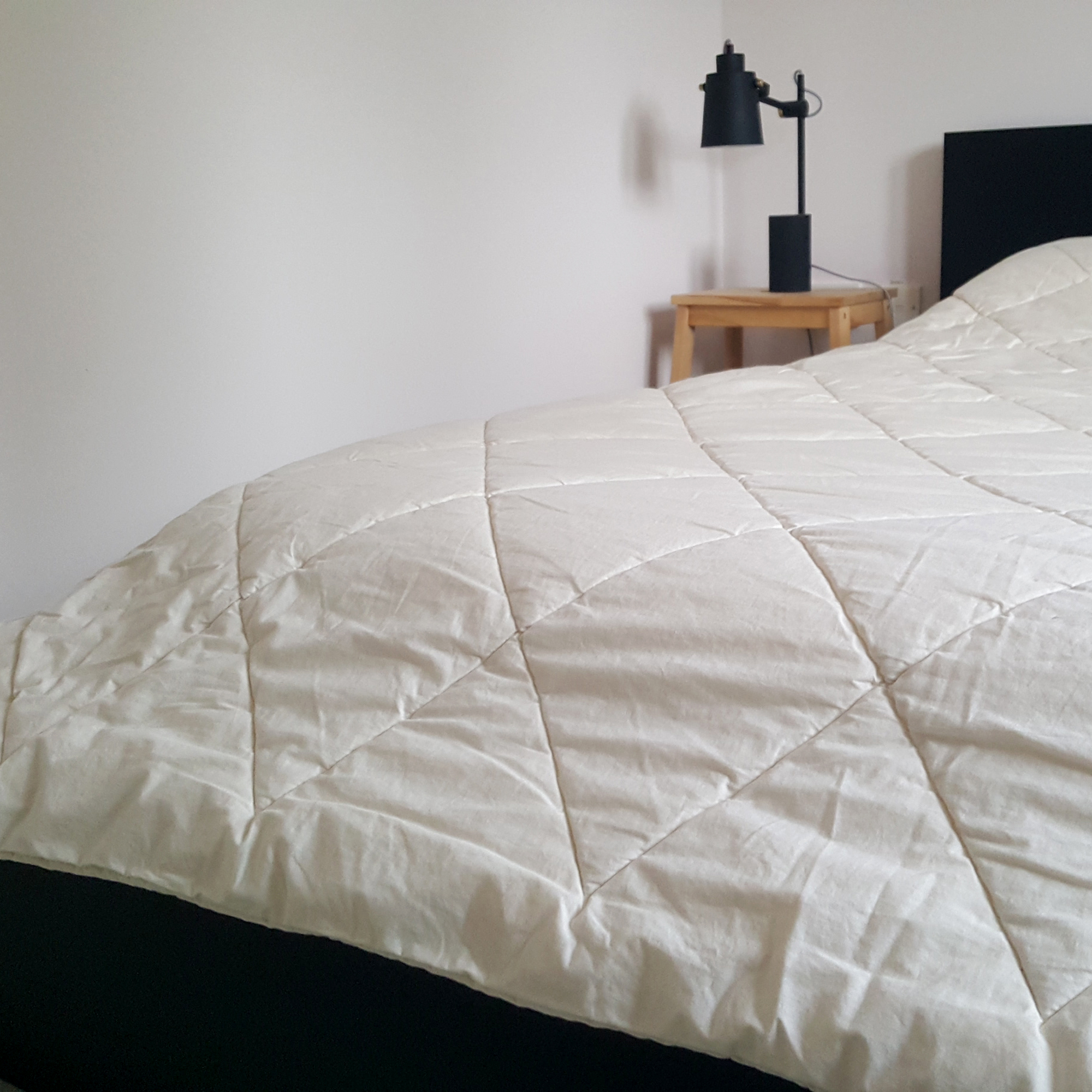

Specifications
Reasons to buy
Reasons to avoid
Temperature regulation: This is one of the warmest winter duvets I've slept under. I tested it in a cold bedroom in a listed Victorian building during nights when I struggled to get the room temperature over 16°C, and I stayed warm and cosy under this duvet all through the night. Even better, thanks to the wool filling's excellent temperature regulation, I never woke up too warm. That temperature regulation is also a huge benefit if you share a bed. Instead of me sweltering whilst my partner shivered, this duvet kept both of us at the exact right temperature all night long. That first-rate temperature regulation also makes this a brilliant duvet for warmer temperatures too. In fact, whilst this 'warm' version of the Deluxe Washable Wool Duvet is the best for winter, I've taken to using the 'medium' version all year long. I add a wool blanket over the top in winter on especially chilly nights, and only need to swap to a lighter covering on the very hottest of summer nights.
Breathability: Finding the best winter duvet isn't just about opting for a high tog; I've found that breathability is just as important. It's all very well bedding down under a super cozy duvet, but with many of the winter options I tested, I then found myself waking up in the middle of the night hot and sticky. That never happened with this duvet because its wool fill offers such good breathability. And that meant I got a much deeper and less disrupted sleep.
Feel: Before testing this Woolroom duvet, I'd been sleeping under a cloud-like feather-and-down duvet. In comparison, not only does this wool-filled duvet feel heavier, but it also feels a lot less luxurious. I was surprised how thin and utilitarian it felt when I unpacked it (I actually thought it was so thin it would never keep me warm, but how wrong I was!). The filling also feels quite dense and lacks the 'squish' of feather and down, which means you can't tuck the duvet around every inch of your body quite as well. However, I soon found that its superior temperature regulation is 100% worth the sacrifice.
Ease of care: Unlike almost any other wool duvet on the market, Woolroom's Deluxe can be machine-washed, making it far easier to care for. The only caveat is that you need to line-dry it rather than tumble dry, and I found it took a full day to dry completely when I hung it outdoors on a sunny and warm day. If you don't want to wait for good weather to wash your duvet, an easy-care synthetic duvet might be the better option.
Value for money: This is a mid-range wool duvet. It isn't cheap, but having tested numerous duvets, I feel it's really worth the investment. It offers such good temperature regulation that it's transformed my sleep quality, and even means I can turn the bedroom thermostat down a few notches. It's also the only wool duvet I've found that comes with a sleep trial; you can sleep-test it for 30 nights on your own bed to see if it transforms your sleep in the same way it has mine.
Winter duvet alternatives
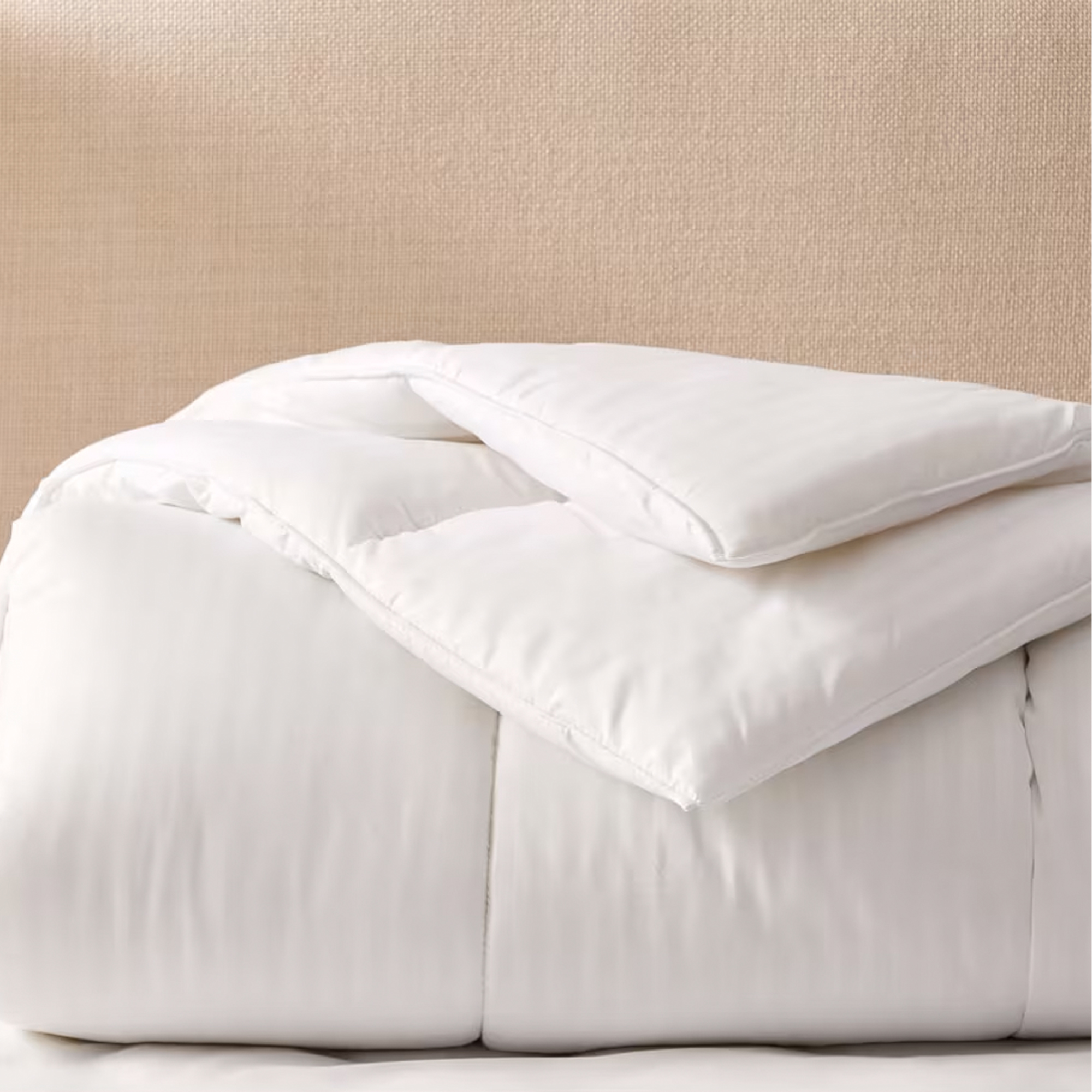
RRP: from £34.50
Tog ratings: 1 / 4.5 / 7.5 / 10.5 / 13.5 / 15 / all-seasons
Vegan? Then Woolroom's wool-filled duvet may not be for you. The Dunelm Fogarty Touch of Silk 13.5 Tog Winter Duvet or the M&S Supremely Washable 13.5 Tog Duvet are the best synthetic winter duvets I've found. Plus, they're both machine washable and far more budget-friendly. Again, as a hot sleeper, I just found I tended to get hot and sticky under the winter weights or was left shivering under lower togs.
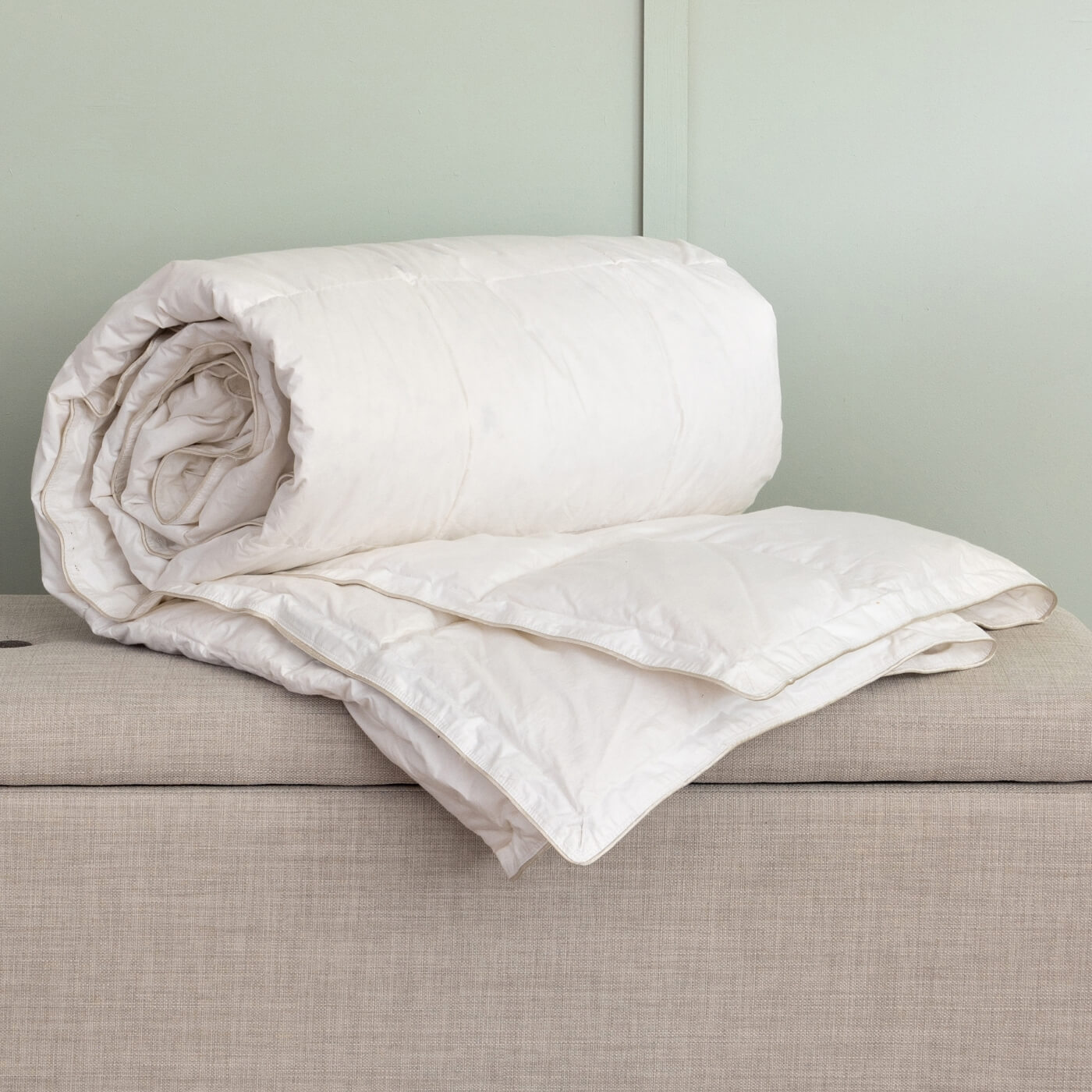
RRP: from £330
Tog ratings: 3 / 4.5 / 9 / 13.5 / all-seasons
For the most luxurious sleep, nothing rivals a goose down duvet. If you want to feel like you're sleeping in a high-end hotel, the Soak & Sleep 90% Hungarian Goose Down 13.5 Tog Winter Duvet is the one. It feels super puffy, squashy, and airy, and is like snuggling into a cloud. It's also super warm and cosy – as a hot sleeper, I just found it less breathable than Woolroom's wool duvet and overheated by 3 am.
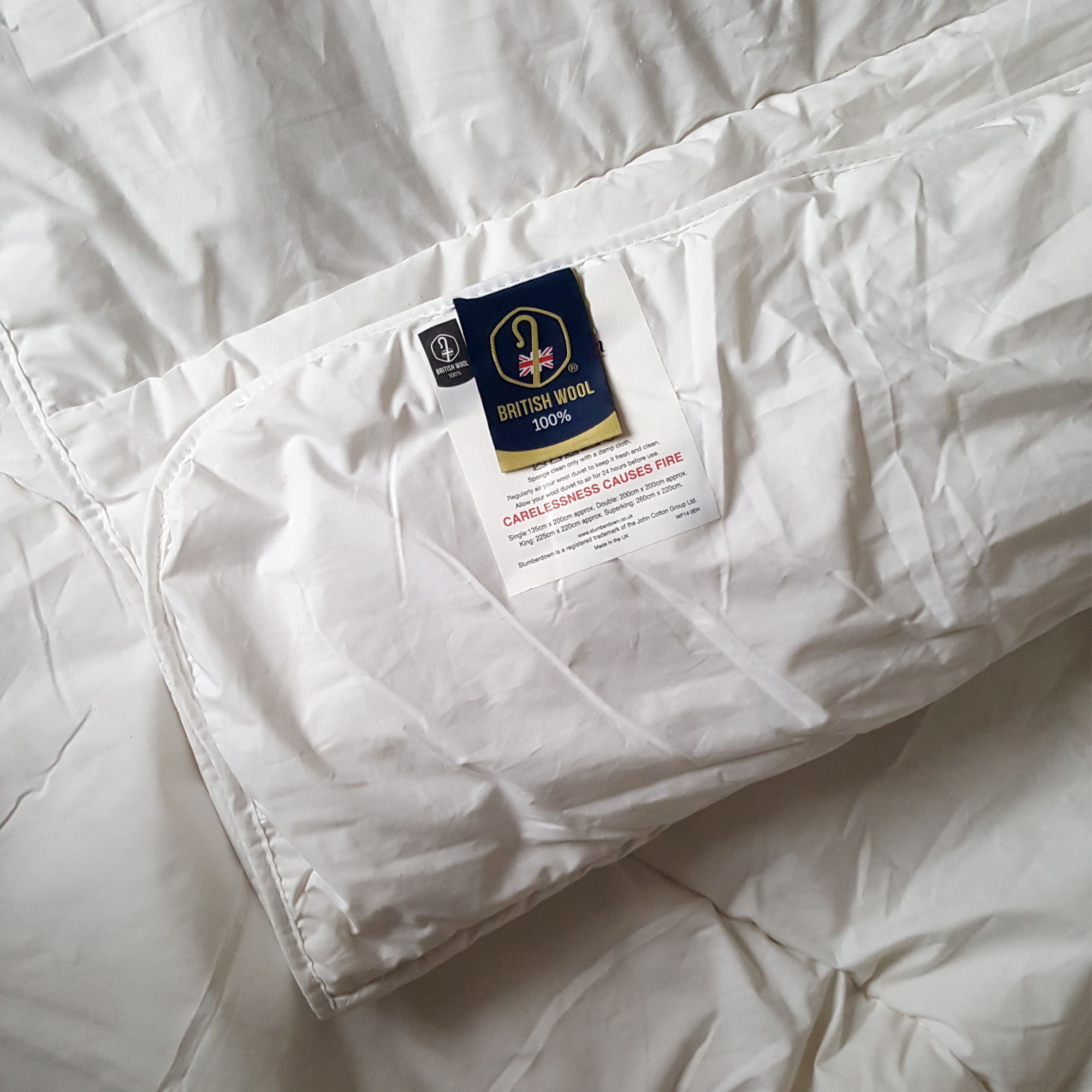
RRP: from £59
Tog ratings: light / medium / heavy
If, like me, you're prone to overheating at night and want to benefit from the breathability of wool but at a lower price point, the Slumberdown Wonderful Wool Duvet is a far more affordable alternative. It feels a lot more basic than the premium Woolroom option, you can't wash it, and it doesn't come with a sleep trial. However, when I tested the warmest 'Heavyweight' Slumberdown Wonderful Wool Duvet, it still kept me very toasty and warm.
Best all-season duvet


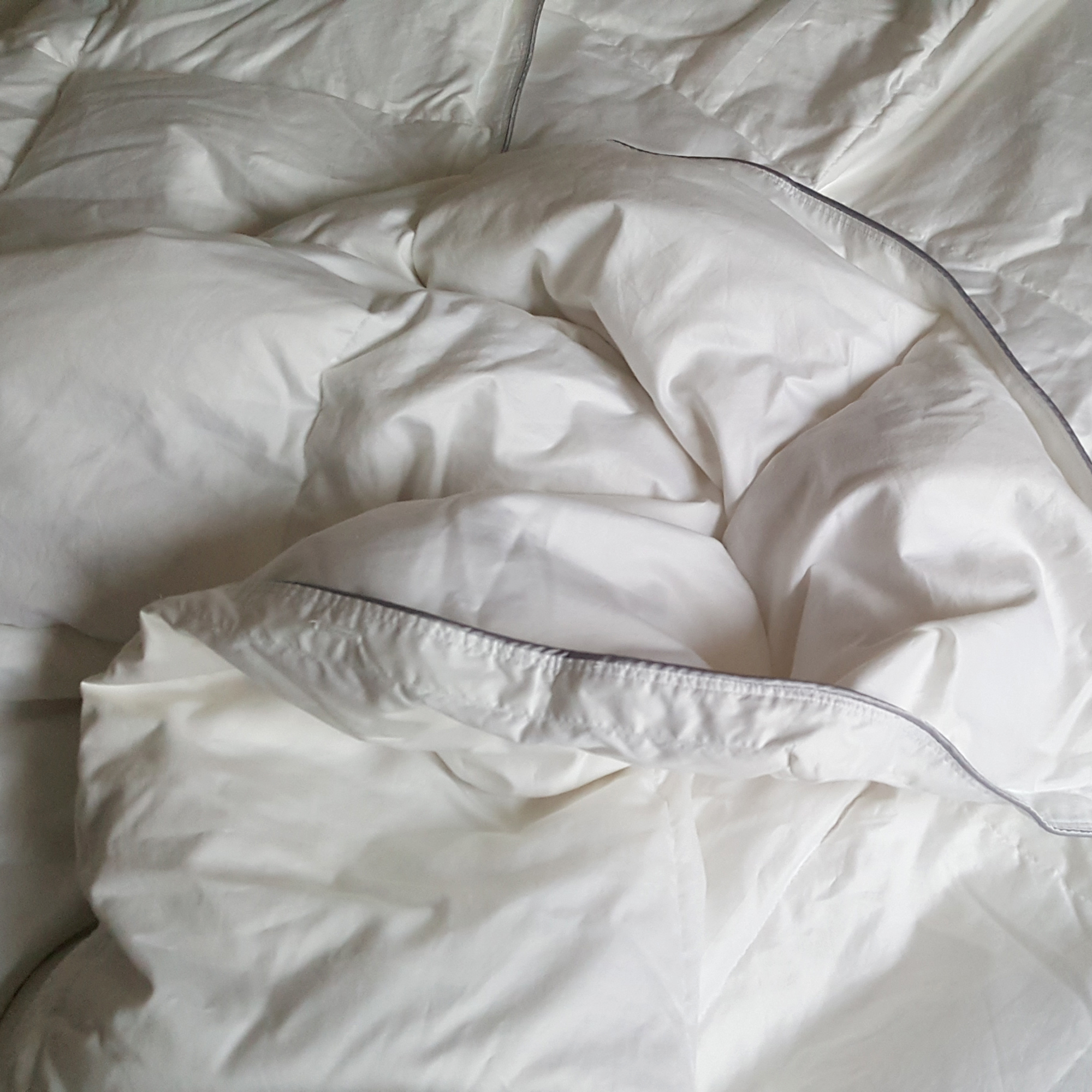

scooms All-Season Hungarian Goose Down Duvet
Our expert review:
Specifications
Reasons to buy
Reasons to avoid
Feel: A feather and down duvet made from the highest quality Hungarian goose down and a very small ratio of feathers, this is the crème de la crème of duvets comfort-wise, and looks and feels super luxurious on the bed. It's soft, squashy, light and airy, and has plenty of malleability so you can tuck it around every inch of your body for the ultimate cocooning softness.
Temperature regulation: Unlike most all-season duvets, which only offer one tog mix, scooms offer three options: a 7 tog (2.5 + 9 tog) all-seasons duvet, an 11 tog (2.5 + 9 tog) duvet, and a 13.5 tog (4.5 + 9 tog) combo. That means there's a good warmth rating for everyone amongst those options. I tested the 2.5 + 9 tog option, and as a hot sleeper, I found it offered me a great choice of warmth levels for each season.
Breathability: I'm a hot sleeper prone to overheating under bedding that isn't super breathable, and I did find I got warmer under this feather-and-down duvet than I did under the wool-filled duvets I've tested. But, if you're a cold sleeper, that could be a bonus!
Ease of care: Whilst a feather and down duvet isn't quite as easy to care for as a synthetic duvet, this one can still be machine-washed at 40°C. It can even be popped in the tumble dryer on a low heat, although I found it took a lot longer to dry than a synthetic option. Sometimes I've found cheaper feather and down duvets can have a smell, but there was none with this duvet. However, it is very important to make sure a feather and down duvet is thoroughly dry before it goes back on the bed, so I also air-dried mine outside after washing and tumble drying to make sure no moisture was left in it.
Value for money: If you're looking for high-end hotel comfort at home, this duvet is the ultimate luxury, but it does come with a luxury price tag to match. However, scooms offers a 60-night sleep trial on its duvets, which is a great way to test out if this investment purchase is right for you before you commit.
All-Season duvet alternatives

RRP: from £50
Tog ratings: 4.5 tog / 10.5 tog / 13.5 tog / 15 tog / all-season
If you're vegan, prize ease of care, or want a far more budget-friendly all-seasons duvet, either this M&S option or the John Lewis Synthetic Soft Touch Washable 3-in-1 13.5 Tog Duvet are my top recommendations. Both are made from recycled polyester, both can be machine-washed, and both are reasonably priced.
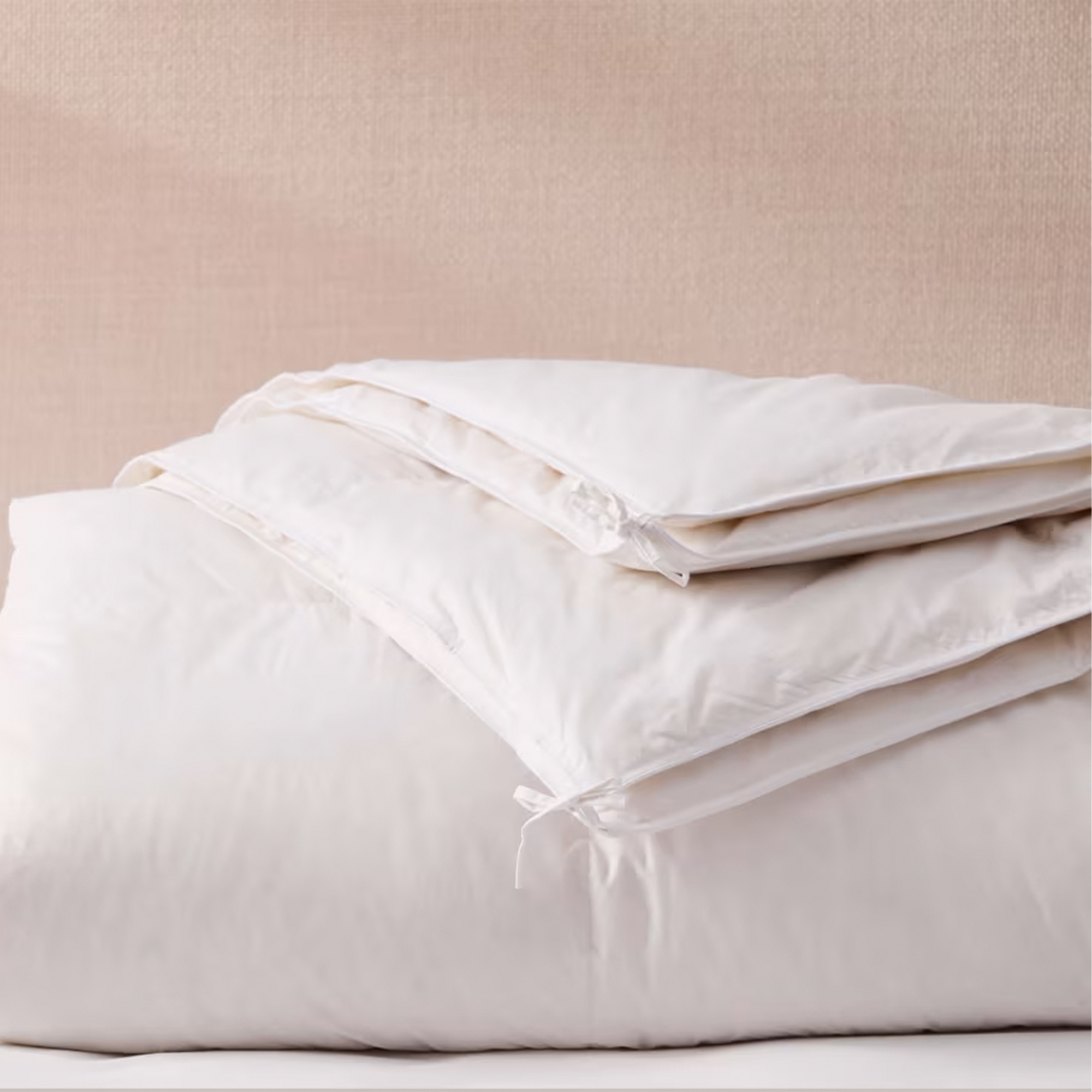
RRP: from £75
Tog ratings: 2.5 / 4.5 / 7.5 / 10.5 / 13.5 / all-seasons
If you love a goose feather and down duvet, but not the price, this is an affordable alternative. The higher feather mix and use of duck rather than goose down mean it feels more 'clumpy' than scooms light and airy duvet, but it still offers plenty of 'flumph' and warmth.

RRP: from £300
Tog ratings: light / medium / warm / all-seasons
Wool-filled duvets don't have tog ratings because they offer such excellent temperature regulation that they adapt to the sleeper. However, this Woolroom duvet is estimated to be roughly equivalent to 2-15 togs, which makes it a great option for year-round use – especially if you're prone to overheating, as wool's breathability is second to none.
Best budget duvet
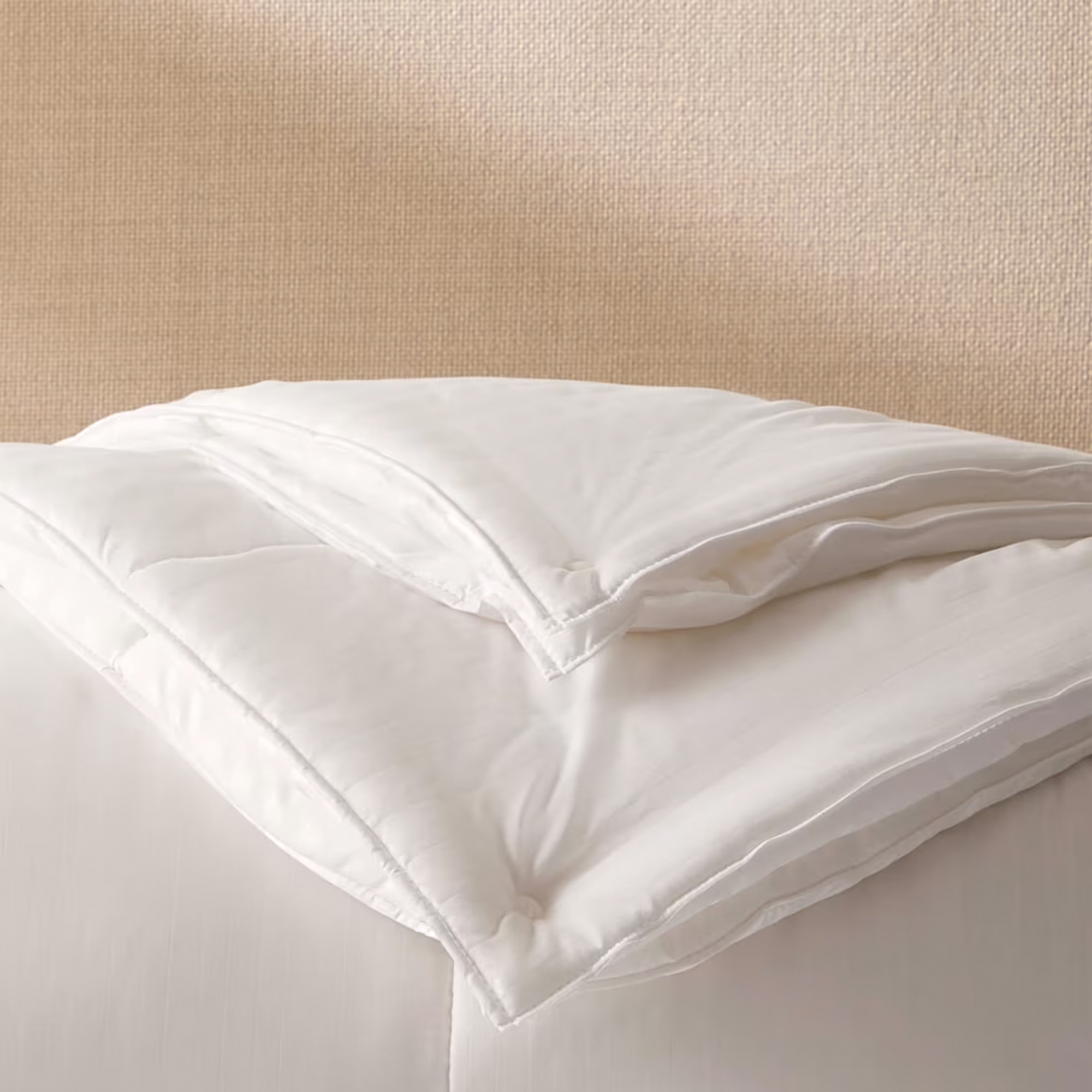
M&S Supremely Washable All Season 13.5 (4.5 + 9) Tog Duvet
Our expert review:
Specifications
Reasons to buy
Reasons to avoid
Temperature regulation: The downside of any synthetic duvet is poor temperature regulation. That can make a synthetic duvet a false economy, as you usually need to buy two if not three separate duvets to get the right warmth for summer, winter, and the shoulder seasons of spring and autumn. Opting for an All-Season synthetic duvet is often a better value solution, and this M&S option offers a versatile 4.5 tog and 9 tog duvet that can combine to create a toasty 13.5 tog.
Breathability: This duvet has lots of plus points, namely affordability and ease of care, but breathability is the one thing it lacks. This is the case with any synthetic duvet, and although the Supremely Washable is more breathable than many synthetic options thanks to its airier fill, it can't compete with a wool duvet in this category, and I did find myself feeling clammy on hotter nights or when my temperature was high.
Feel: It doesn't have the same cocooning feel as a feather and down duvet, but thanks to its airy recycled polyester fill, I still found the Supremely Washable squishy and pliable, meaning I could tuck it around my body to keep out any draughts.
Ease of care: This is where a synthetic duvet really comes into its own. The Supremely Washable can be machine washed at 60°C, which is good news for anyone with allergies. It can also be tumble dried on low and I found it super fast to dry, so it can be washed and back on the bed on the same day.
Value for money: Synthetic duvets are far cheaper than wool or feather and down fillings, and this is one of the best value polyester duvets I've found. I think the All-Seasons option is the best buy overall because it means you have a warmth option for each season, but if you need an even more affordable option then the M&S Supremely Washable Duvet range is also available in 1, 4.5, 7.5, 10.5 and 13.5 tog warmth options which range from £19.50-£69.
Budget duvet alternatives
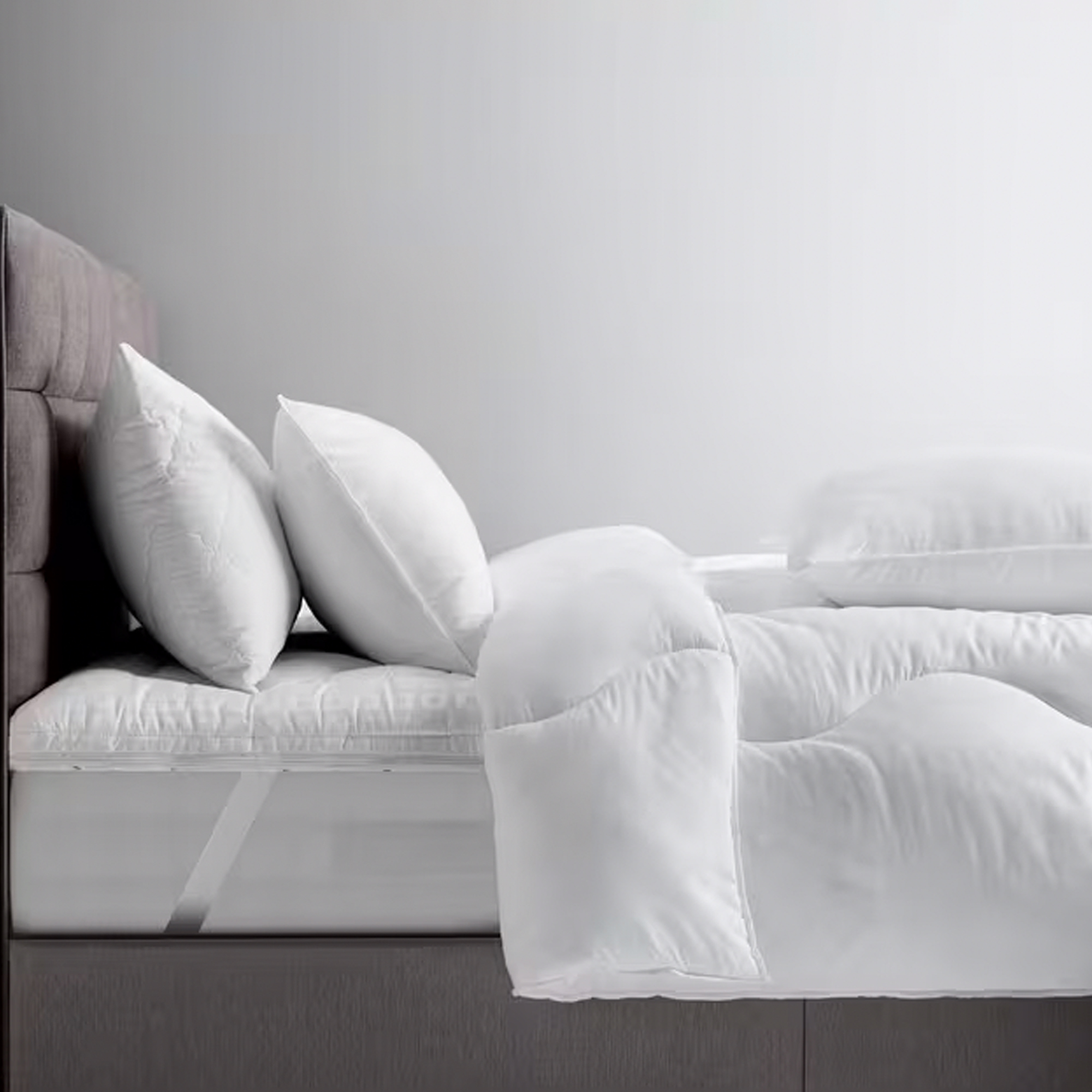
RRP: from £25
Tog ratings: 4.5 tog / 10.5 tog / 13.5 tog / 15 tog / all-season
Depending on what tog and size duvet you're looking for, John Lewis can sometimes be better value for money than M&S, or have options in stock that Marks & Spencer does not. Both duvets are made from recycled polyester, are washable at 60°C, and are great value for money, so you won't go wrong whichever brand you opt for.
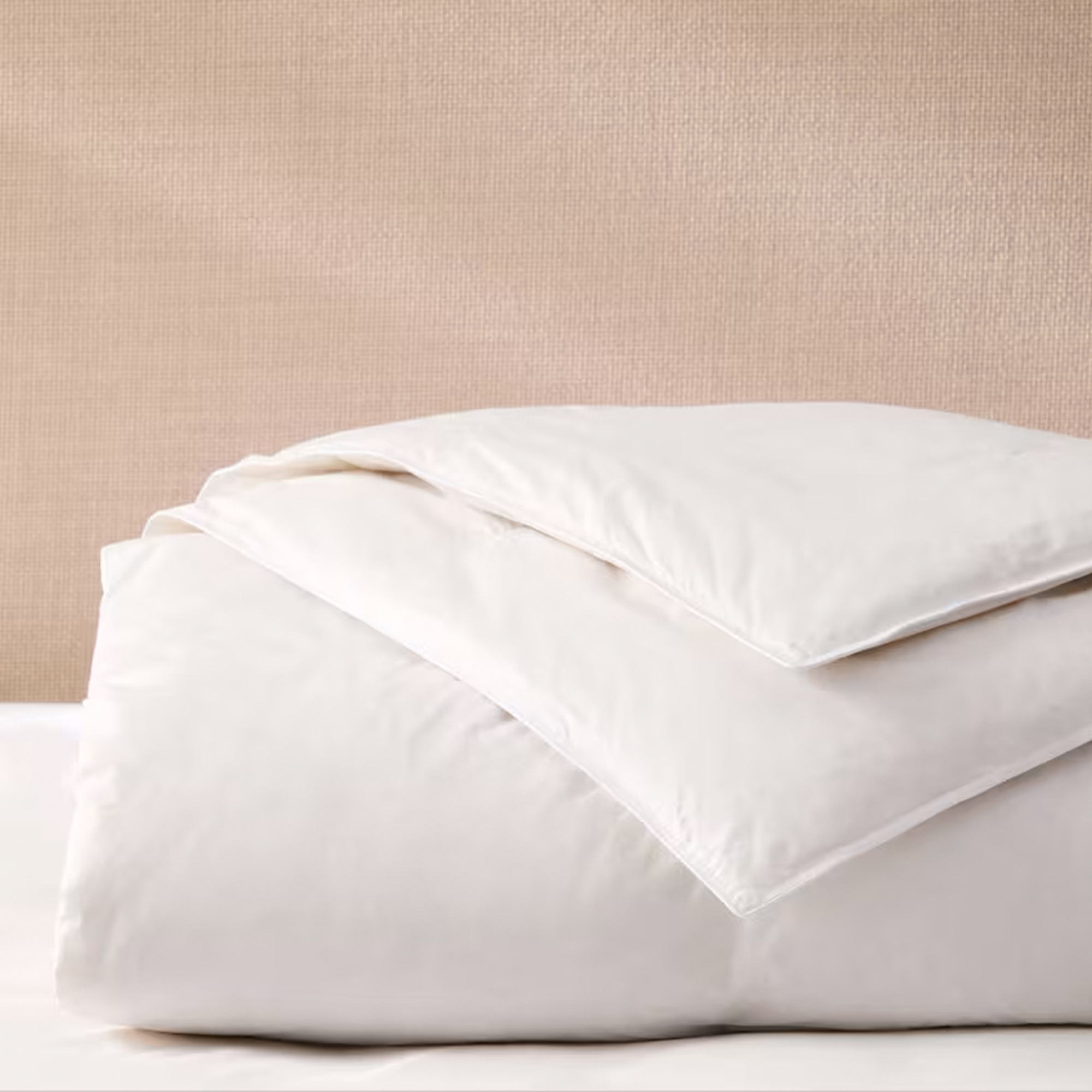
RRP: from £34.50
Tog ratings: 2.5 / 4.5 / 7.5 / 10.5 / 13.5 / 15 / all-season
The M&S Supremely Washable feels more premium than many synthetic duvets, but it can't quite compete with a feather-and-down duvet in terms of squish-factor. As an alternative, this is the best budget-friendly feather and down duvet I've found.

RRP: from £41
Tog ratings: : 3-4.5 tog / 7-9 tog / 10-12 tog
If you're a hot sleeper then I wouldn't advise a synthetic duvet (however affordable they may be) as the filling tends to be the least breathable and most likely to cause overheating. Instead, you need a wool-filled duvet, and this is the best value wool duvet I've tested.
Best wool duvet





Woolroom Deluxe Washable Wool Duvet in Medium
Our expert review:
Specifications
Reasons to buy
Reasons to avoid
Temperature regulation: This was the first wool duvet I tested, and having now tested multiple others, I still think it's one of the best. Its temperature regulation is superb, keeping me warm and cosy on cold nights, whilst never causing me to wake up too warm. Because of that, I think it's the best duvet for a hot sleeper. The wool fill's ability to create a 'microclimate' around a sleeper is also a huge benefit if you share a bed with someone with a different inner thermostat than you.
Breathability: I'm a hot sleeper who is prone to overheating, and I thought that was just something I had to put up with until I first slept under this duvet. It has fantastic breathability, and whilst sleeping under it, I haven't ever woken up feeling too hot or clammy or felt the need to kick off the covers, which is pretty remarkable.
Feel: This is the one area where this duvet is a little less impressive. It feels thin and flat, and I do miss the squish-factor you get from a more premium option (like the more expensive Floks Luxury British Wool Duvet) or a feather-and-down duvet. I also find the fact its corners are round rather than square annoying as they don't fit a duvet cover well. However, the fact that it's still the duvet I choose to sleep under every night is testament to the great night's sleep it delivers.
Ease of care: Very few wool duvets are washable, because, in Woolroom's words 'the combination of moisture, heat and movement in the washing machine will cause wool to felt and shrink'. However, the brand has overcome this issue by using some clever technology to treat the wool fill in their Deluxe duvet. If washability is important, this is the wool duvet for you.
Value for money: Trust me, swapping to a wool fill duvet is a gamechanger if you're a hot sleeper, so although this duvet isn't cheap, I think it's worth every penny. Having tested more affordable and more expensive options, I also think its fairly priced. Plus, it's the only wool duvet I've found that comes with a sleep trial – you have 30 nights to test out how much this wool-filled duvet will improve your sleep too.
Wool duvet alternatives

RRP: from £45
Tog ratings: lightweight (3-4.5 tog) / mediumweight (7-9 tog) / heavyweight (10-12 tog)
Wool duvets are generally fairly expensive, which is why this affordable option is such a welcome discovery. It does feel more budget than the other options – the cover felt stiff, which meant it didn't drape well and made a crinkling noise when I scrunched it around me – but it still did a great job of temperature regulation, keeping me cosy without overheating.
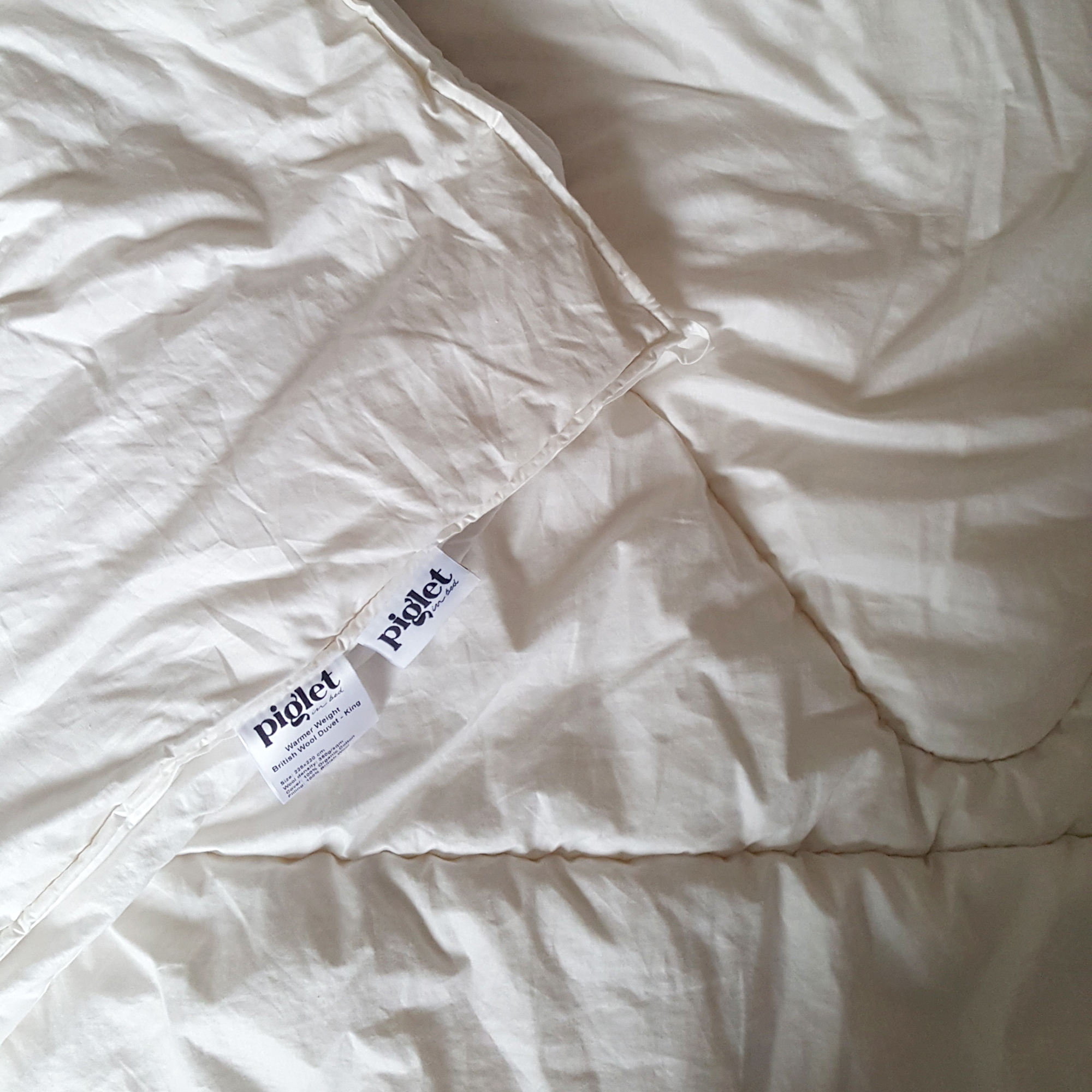
RRP: from £99
Tog ratings: light (4-6 tog) / warm (8-10 tog)
This duvet doesn't feel as premium as the Floks option, but it does feel more premium than Slumberdown's budget-friendly offering, mainly due to its softer cotton cover which gives it a good drape and means it makes less of a crinkling noise as you tuck it around you. Overall, it's a good middle ground between the two, and its price tag reflects that.

RRP: from £180
Tog ratings: summer (4-5 tog) / winter (12-14 tog) / all-season (8-10 tog)
This is a great wool duvet that instantly feels a lot more premium than any other option I've tested, thanks to its squishier, fuller filling. It feels great to snuggle up under and tuck around you on a cold night, and looks better on the bed than Woolroom's 'flat' duvets. However, it's more expensive, you can't wash it, and there's no sleep trial.
Best feather and down duvet
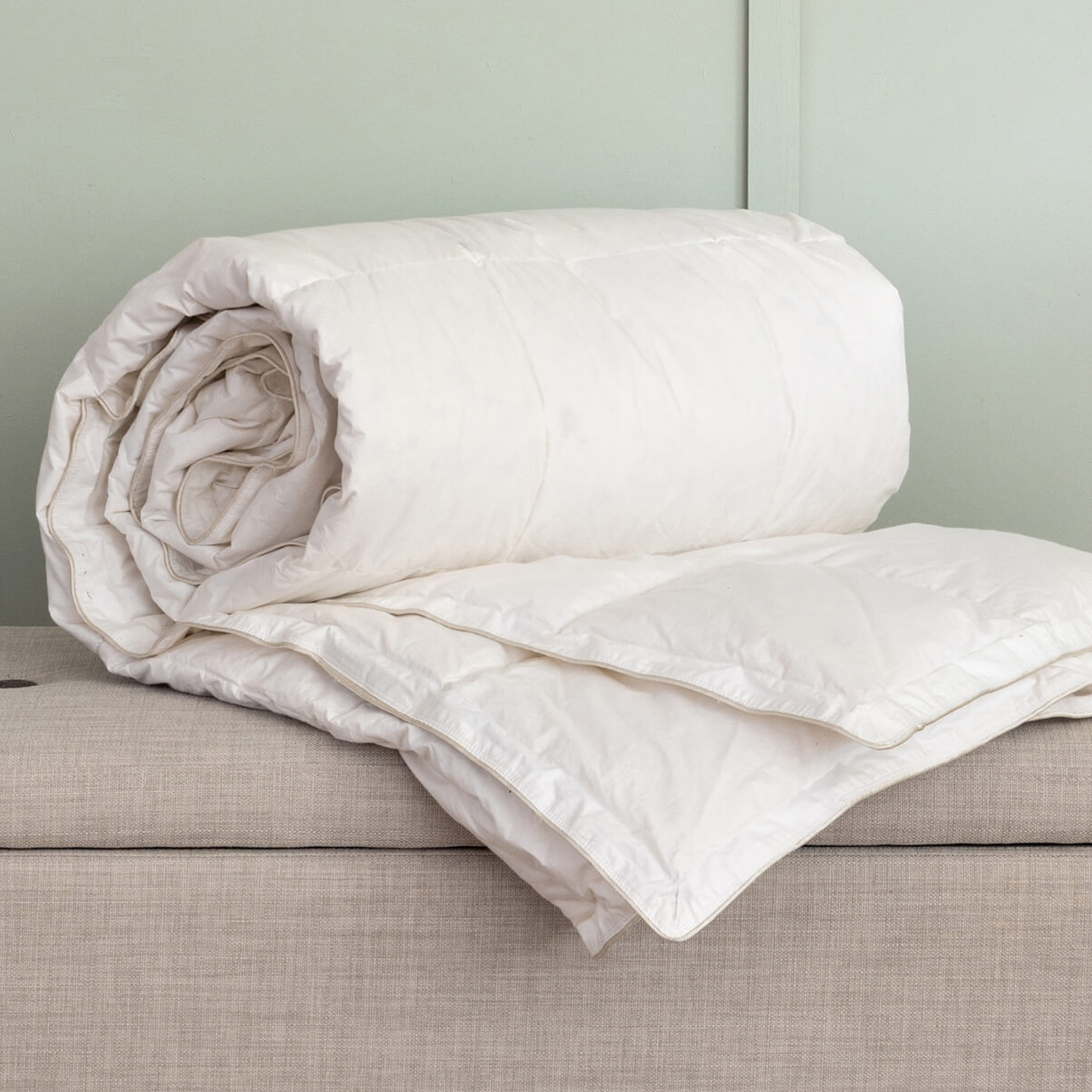
Soak & Sleep 90% Hungarian Goose Down Duvet
Our expert review:
Specifications
Reasons to buy
Reasons to avoid
Temperature regulation: I tested the warmest 13.5 tog version of Soak & Sleep's Hungarian Goose Down duvet (there are also a wide range of other togs available) and I found it super insulating and cosy to snuggle up under. If you're a cold sleeper, a feather and down duvet is a brilliant buy. However, if you're a hot sleeper, then, like me, you might find yourself slowly overheating as the night goes on. More on that in the next section.
Breathability: I'm a hot sleeper who is prone to overheating, so, for me, this is where a feather and down duvet falls down. I loved snuggling into this duvet at night, but, come 3am, I regularly found I would wake up hot and clammy because my body heat wasn't able to dissipate through the duvet fill in the same way it could with the wool-filled duvets I tested. If you're a cold sleeper this likely won't be a problem, but if you know you're prone to getting sticky at night, this may be a reason to opt for wool instead.
Feel: The feel of this duvet is where it really excels. No duvet feels quite as luxurious as a feather and down duvet, and this Soak & Sleep option is one of the cream of the crop. It's squishy, plumptious, and feels like being wrapped up in a cloud. If you're looking to create the ultimate sleep haven, then this duvet will certainly elevate your bedding and make you feel like you've just checked into a boutique hotel.
Ease of care: A feather and down duvet will require regular shaking to keep the filling aired and evenly distributed (this is helped by this duvet's quilted cover which keeps the fill well spread out) and is never going to be as easy to care for as a synthetic duvet that can be bunged in the washing machine without too much thought. However, this option can be washed at 30°c and tumble-dried on low.
Value for money: A good quality Hungarian goose-down duvet will never be cheap, and this duvet is a significant investment. However, in my experience, Soak & Sleep always offers great quality bedding at very competitive price points, and this is the best value Hungarian goose down duvet of this quality that I've found. The one caveat; the scooms Hungarian Goose Down Duvet listed below is slightly more expensive, but it comes with a very useful 60-night sleep trial which this Soak & Sleep option does not.
Feather & down duvet alternatives

RRP: from £145
Tog ratings: 2.5 / 4.5 / 9 / 3 x all-seasons
I found scooms 90% Hungarian goose down and 10% goose feather duvet every bit as good as Soak & Sleep's 90% Hungarian Goose Down Duvet above. It offers superb quality but is just usually slightly more expensive than Soak & Sleep's offering, and Soak & Sleep tends to offer more discounts throughout the year. However, scooms is one of the few brands that offers a sleep trial on its duvets. That means you can test out the duvet for 60 nights to see if it's the right for you. If you haven't slept under feather and down before, that's a real bonus that takes some of the risk out of such an expensive purchase.

RRP: from £180
Tog ratings: 4.5 tog / 10.5 tog / 13.5 tog
On a par with Soak & Sleep and scooms Hungarian Goose Down Duvet in terms of comfort and luxury, but with fewer tog options, and no sleep trials on offer, the White Company's Hungarian Goose Down Duvet is usually the more expensive of the three brands. However, I've included it in this round up because it all depends on which brand has bedding deals running when you come to shop, so should you time your purchase with a sale, this usually spenny Hungarian feather and down duvet could end up being the better buy.

RRP: from £34.50
Tog ratings: 2.5 / 4.5 / 7.5 / 10.5 / 13.5 / 15 / all-seasons
It can't compare to more expensive goose-down duvets in terms of quality, but the best budget-friendly feather and down duvet I've tested is the M&S Duck Feather & Down Duvet collection. The higher feather content (85% duck feathers and 15% duck down compared to 10% goose feathers and 90% goose down in my other three options) means this duvet isn't anywhere near as light, airy, squashy, or luxurious as its high-end competition, but it's still insulating and has a nice feel to it (far nicer than any other options at this price point which have all felt clumpy and sparsely filled).
Best synthetic duvet
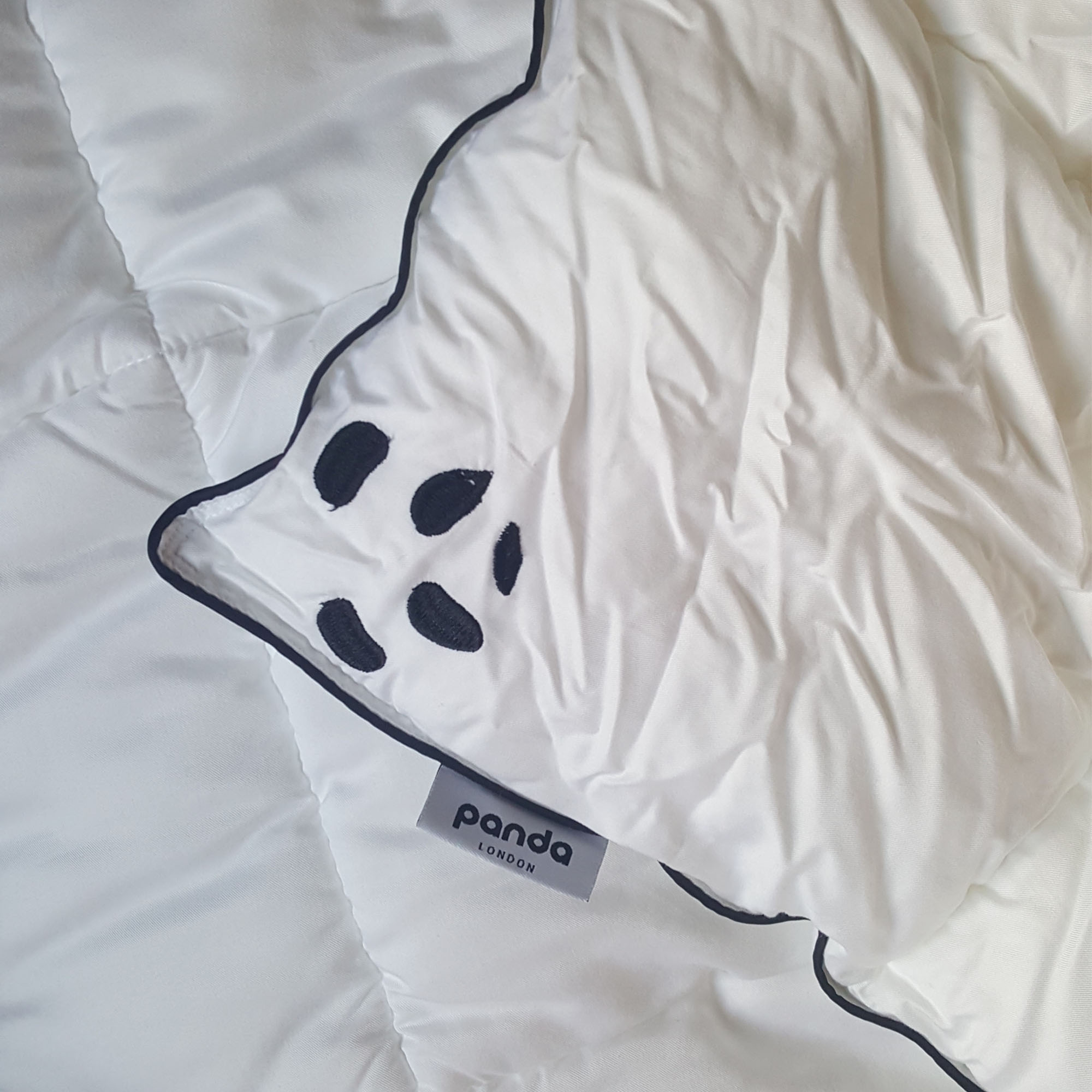
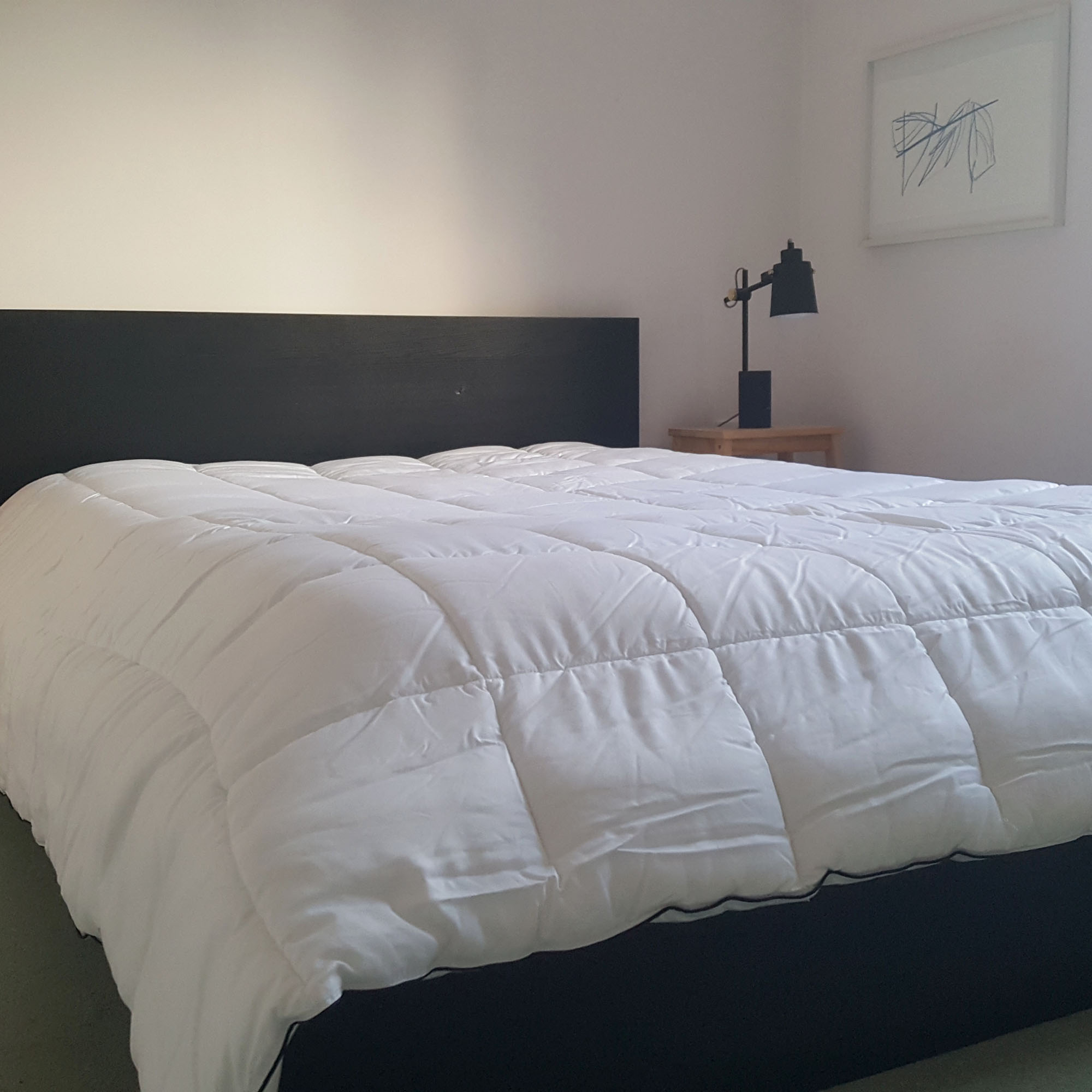
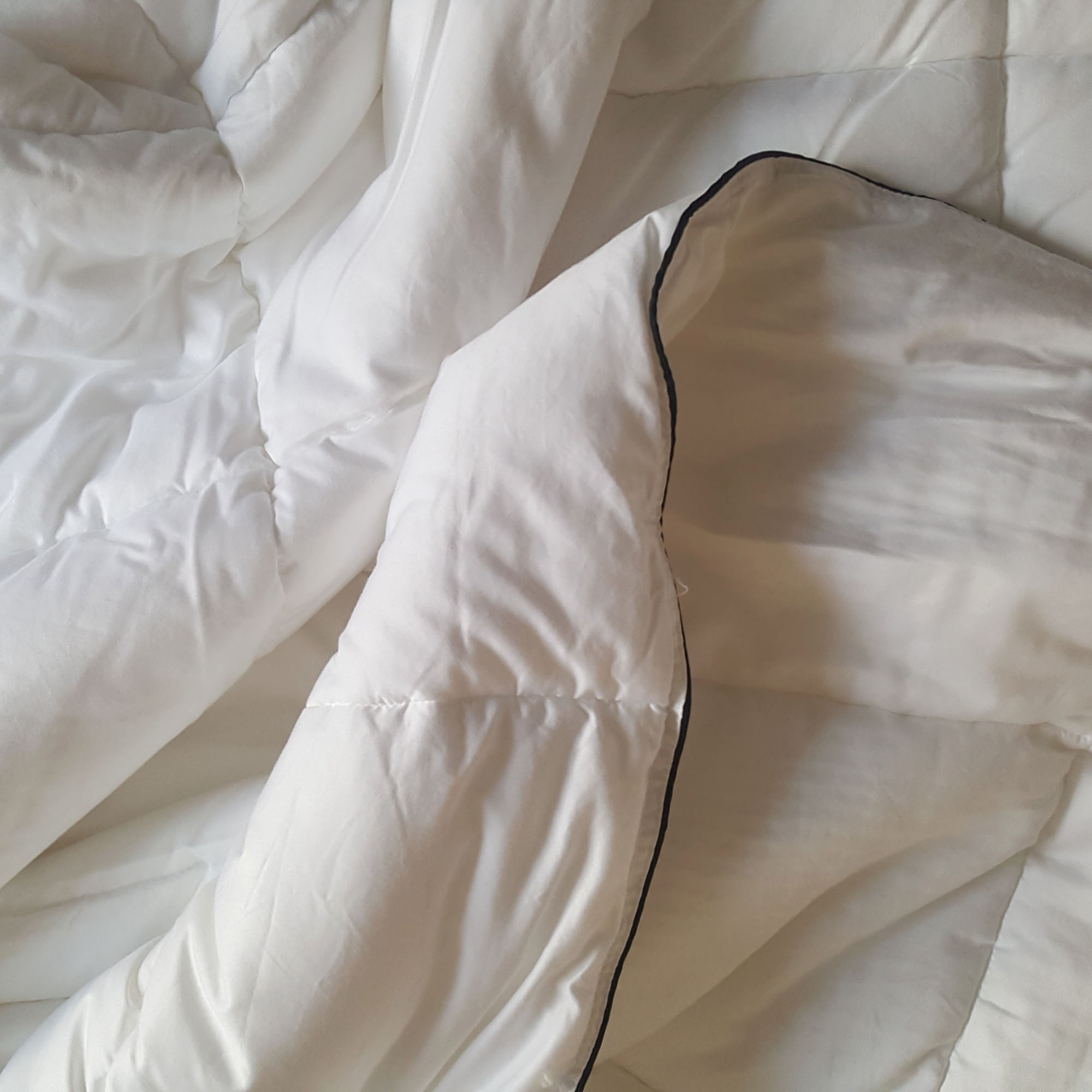
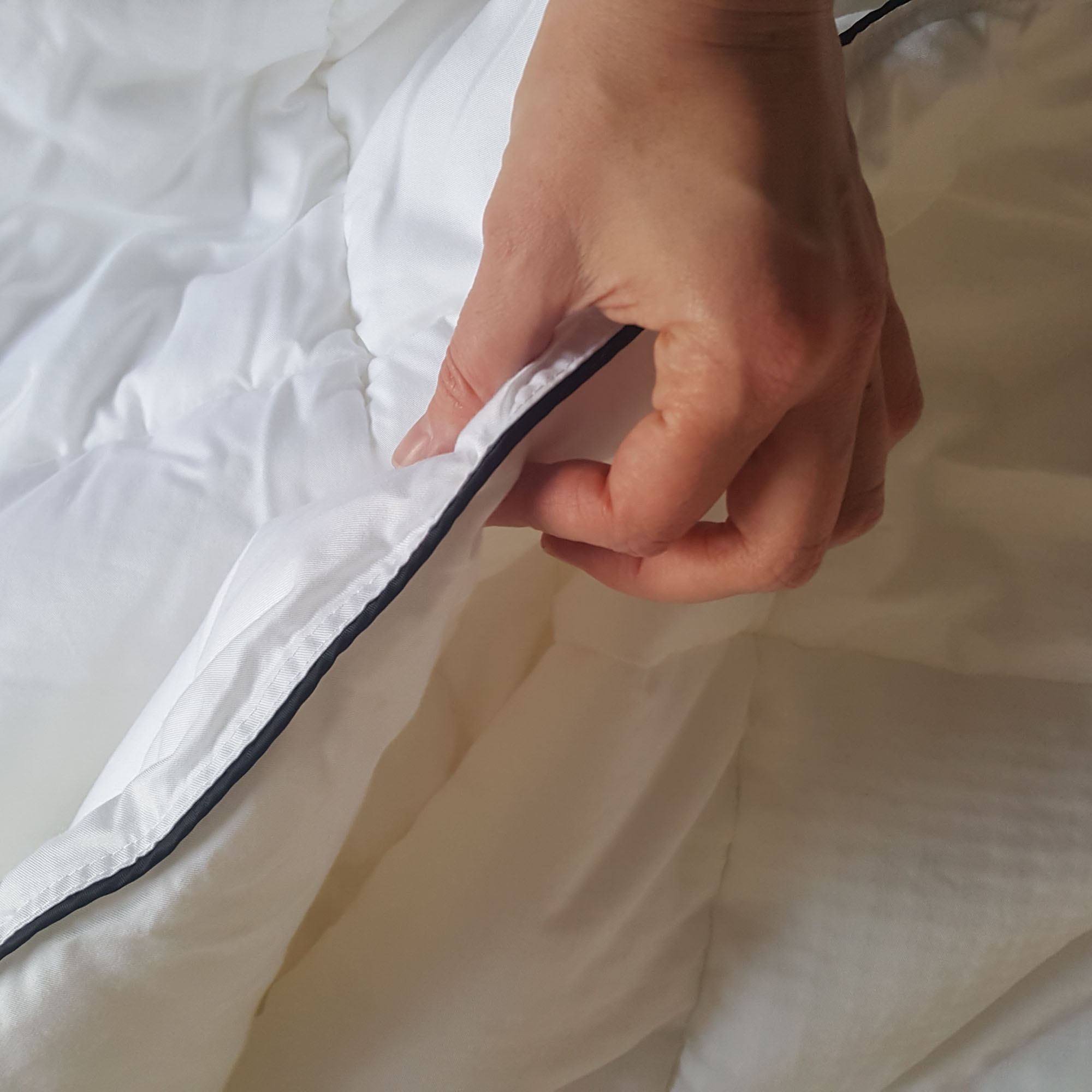
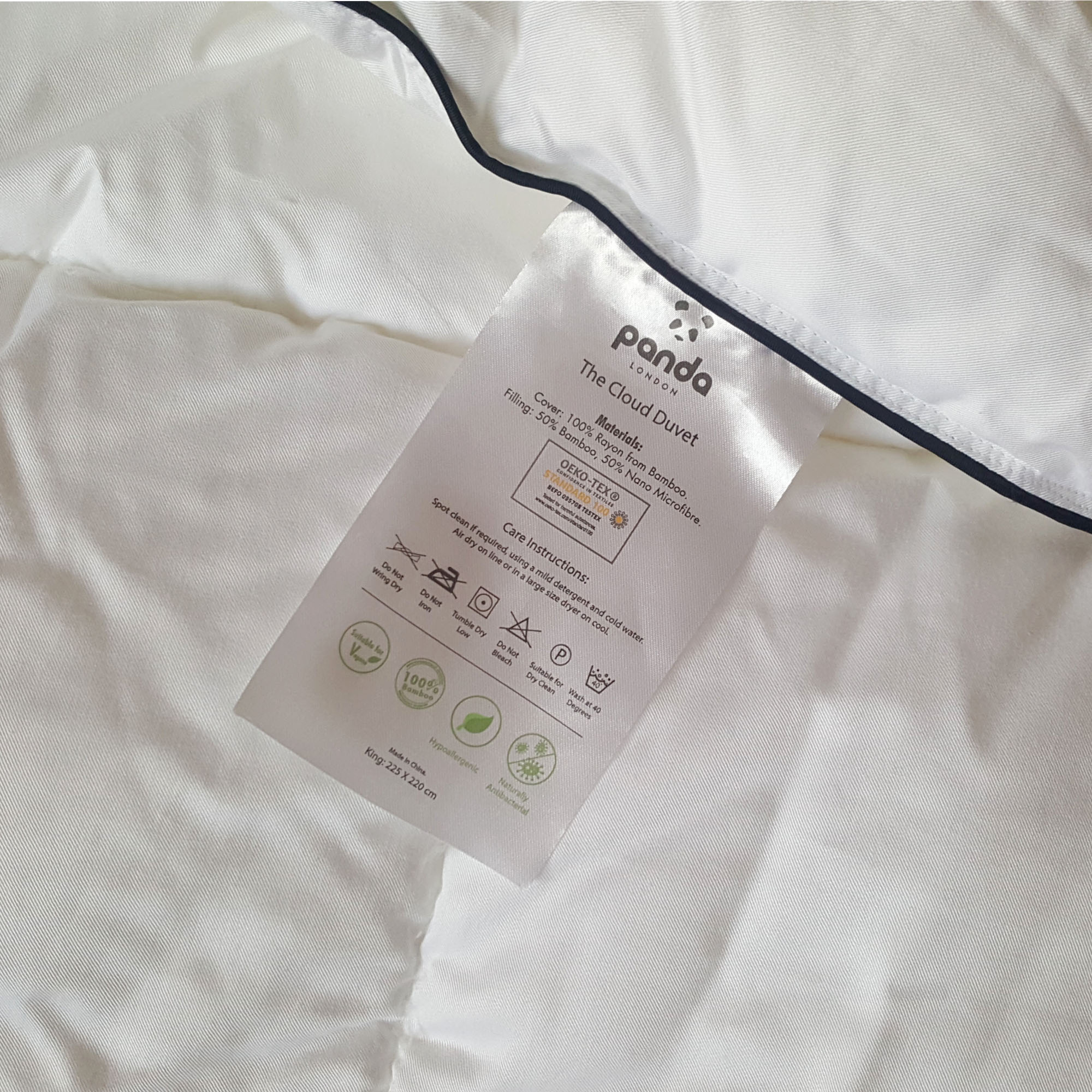
Specifications
Reasons to buy
Reasons to avoid
Temperature regulation: The downside of a synthetic duvet can often be poor temperature regulation. However, Panda has combatted this by using a blend of bamboo and polyester fibres in the Cloud duvet. And it works. I didn't find it kept me quite as cool on warm nights or as warm on cold nights as a wool-filled duvet, but its temperature regulation is far superior to most synthetic duvets I've tested in this regard. However, it would be nice to see more tog options available. There's only a 4.5 and 10.5 tog, so it would be nice to see a warmer option.
Breathability: As a hot sleeper I usually struggle under a synthetic duvet as those polyester fibres reflect humidity back towards the sleeper causing overheating. I did still wake up a little too warm at around 5am each night I spent under this duvet, but its bamboo mix helped again, and I found it far more breathable than most alternative poly-bend duvets.
Feel: The addition of the bamboo also gives this duvet a silky feel that makes it feel far more premium than your average microfibre duvet. It drapes well, tucked around me nicely, and was virtually silent. It feels a lot like a vegan-friendly alternative to feather and down. I also liked the slight extra weight the bamboo added as I find a slightly heavier duvet helps me to sleep better.
Ease of care: The Cloud duvet can machine washed at 40°c and line dried or tumble dried on a low setting. That makes it very easy to care for and means it can be washed and back on the bed on the same day.
Value for money: The Cloud duvet is expensive considering 50% of its filling is polyester, but I do think the addition of the bamboo microfibre adds a lot of value. It means the Cloud duvet looks and feels much more premium and it does a far better job of temperature regulation, whilst still benefitting from being very easy to care for.
Synthetic duvet alternatives
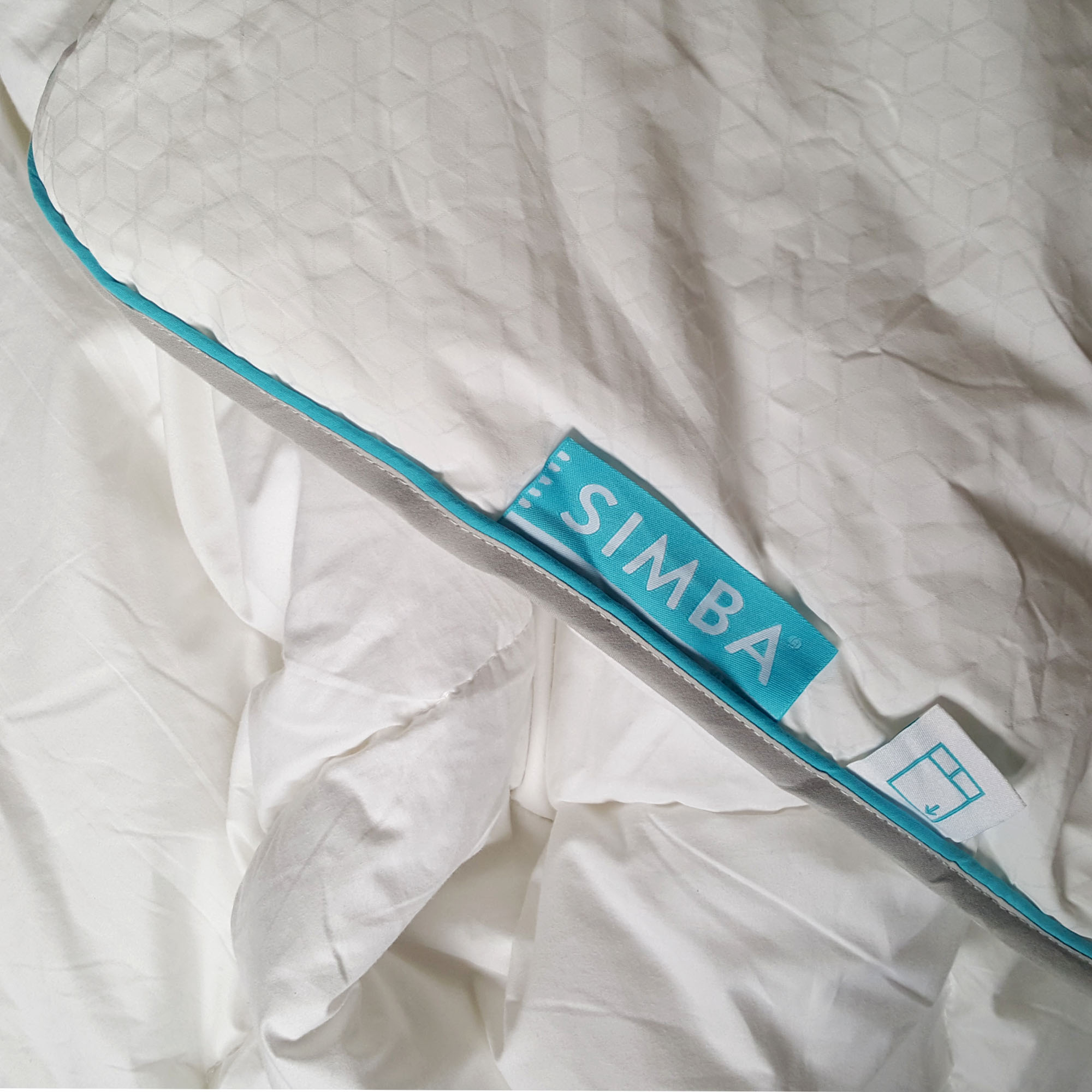
RRP: from £139
Tog ratings: 4.5 / 10.5 / all-season
The Simba Hybrid duvet is a bestselling synthetic duvet that also aims to solve the problem of overheating by adding temperature regulating 'phase technology' to its cover. However, during testing, our Simba Hybrid Duvet review found that to make the duvet feel stiff and noisy. Plus, this duvet is expensive. It's a good option if you're buying a Simba mattress and get it as part of a bundle, but otherwise, I preferred the more affordable Panda Cloud duvet above.

RRP: from £69
Tog ratings: not specified
I've included the Emma Cloud Duvet in this round-up because it's one of the most searched-for duvets on the internet. It's a very lightweight duvet that does live up to its light and airy name. However, during testing for our Emma Cloud Duvet review, I found it to be expensive for what it is. I'd recommend the summer Dunelm Fogarty Light & Lofty 4.5 Tog Duvet or the winter Dunelm Fogarty Light & Lofty 10.5 Tog Duvet instead. I found them comparable for half the price of the Emma duvet.

RRP: from £19.50
Tog ratings: 1 / 4.5 / 7.5 / 10.5 / 13.5 / 15 / all-seasons
If you're after a budget-friendly synthetic duvet then I'd recommend either this M&S Supremely Washable Duvet or the John Lewis Synthetic Soft Touch Washable Duvet. Both are made from recycled polyester, can be machine-washed and dried, are available in a wide range of tog ratings to help you choose the correct warmth for your needs, and most importantly, they won't break the bank.
Best summer duvet





Specifications
Reasons to buy
Reasons to avoid
Temperature regulation: Yep, it's another win for wool, and specifically Woolroom's 'Light' Deluxe Washable Duvet. That's because finding the best summer duvet isn't just about opting for a low tog; good temperature regulation is just as important. Both myself (a hot sleeper) and my partner (a cold sleeper) found this duvet the best of the bunch for temperature regulation. It saw us through summer heatwaves and unseasonable cold summer nights without me overheating or him complaining about being chilly.
Breathability: Good breathability is another key factor in a summer duvet when we're all prone to getting more hot and sweaty then usual. Under even the lowest 2-5 tog synthetic or feather and down summer duvets I tested, I still found myself waking up clammy on warm nights, but not so with this wool duvet. I found it allowed air to circulate through the fibres for a sweat-free summer sleep.
Feel: When I first unpacked this duvet, I have to admit I was a little disappointed by how flat it looked on the bed; it feels thin and very utilitarian. However, I soon found that its temperature regulation is 100% worth the sacrifice of 'squish', especially if you're a hot sleeper.
Ease of care: Unlike almost any other wool duvet, Woolroom's Deluxe can be machine-washed, making it far easier to care for. You need to line dry it rather than tumble dry, but as this is a summer duvet, you should have good weather on your side.
Value for money: This is a mid-range wool duvet. It isn't cheap, but having tested numerous duvets, I feel it's really worth the investment. It's also the only wool duvet I've found that comes with a sleep trial; you can sleep-test it for 30 nights on your own bed to see if it transforms your sleep in the same way it has mine.
Summer duvet alternatives

RRP: from £25
Tog ratings: 1 / 4.5 / 7.5 / 10.5 / 13.5 / 15 / all-seasons
If you want affordability and ease-of-care, this synthetic duvet delivers both. It feels super light and airy, and I barely knew it was on top of me! As a hot sleeper, I just found the synthetic fill was prone to making me hot and sticky on warm nights and leaving me shivering on cool summer nights, but, the fact that I could bung it in the washing machine and tumble dry it is a real bonus.

RRP: from £180
Tog ratings: 4.5 / 13.5 / all-seasons
This wool duvet is more of an investment than the Woolroom Deluxe Washable Wool Duvet, doesn't come with a sleep trial, and isn't machine washable, but it does feel a lot more premium and has more squish-factor. If you're looking to invest in breathability, temperature regulation, and luxury, this is the crème de la crème of wool duvets.

RRP: from £190
Tog ratings: 3 / 4.5 / 9 / 13.5 / all-seasons
This high-quality goose down duvet has a super luxurious feel, and is the best value premium feather and down duvet I've found. Although, I didn't find it as breathable or temperature regulating as a wool option. If you're after a more affordable summer feather and down option, the M&S Duck Feather & Down 4.5 Tog Duvet is also a good budget buy.
At a glance: comparison
Duvet | Filling | Tog ratings | Care | Sleep trial | RRP |
wool | 2-5 / 7-10 / 11-14 / all-seasons | machine wash & line dry | 30 nights | from £145 | |
wool | 3-4.5 / 7-9 / 10-12 | spot clean only | no | from £41 | |
feather and down | 2.5 / 4.5 / 9 / 3 x all-seasons | machine wash + tumble dry | 60 nights | from £145 | |
feather and down | 3 / 4.5 / 9 / 13.5 / all-seasons | machine wash + tumble dry | no | from £190 | |
feather and down | 2.5 / 4.5 / 7.5 / 10.5 / 13.5 / 15 / all-seasons | machine wash + tumble dry | no | from £34.50 | |
bamboo + synthetic | 4.5 / 10.5 | machine wash + tumble dry | 30 nights | from £99.95 | |
synthetic | 1 / 4.5 / 7.5 / 10.5 / 13.5 / 15 / all-seasons | machine wash + tumble dry | no | from £19.50 | |
synthetic | 4.5 tog / 10.5 tog / 13.5 tog / 15 tog / all-season | machine wash + tumble dry | no | from £25 |
How I tested
There's no better way to test a duvet than by sleeping under it on your own bed, so that's what I did to compile this guide. I've slept under twenty five duvets (and counting) to compile this shortlist, and have only included those products that impressed me the most.
I slept under each duvet I've tested for at least a week, and in many cases, much longer. During this time, I assessed each duvet's insulation and temperature regulation, its breathability (particularly important to me as a hot sleeper prone to overheating), its feel (meaning how nice it felt to tuck around me as I snuggled up in bed and how well it drapes on the bed), and its ease of care (meaning does it need regularly shaking to redistribute the filling and can it be machine washed or cleaned easily).
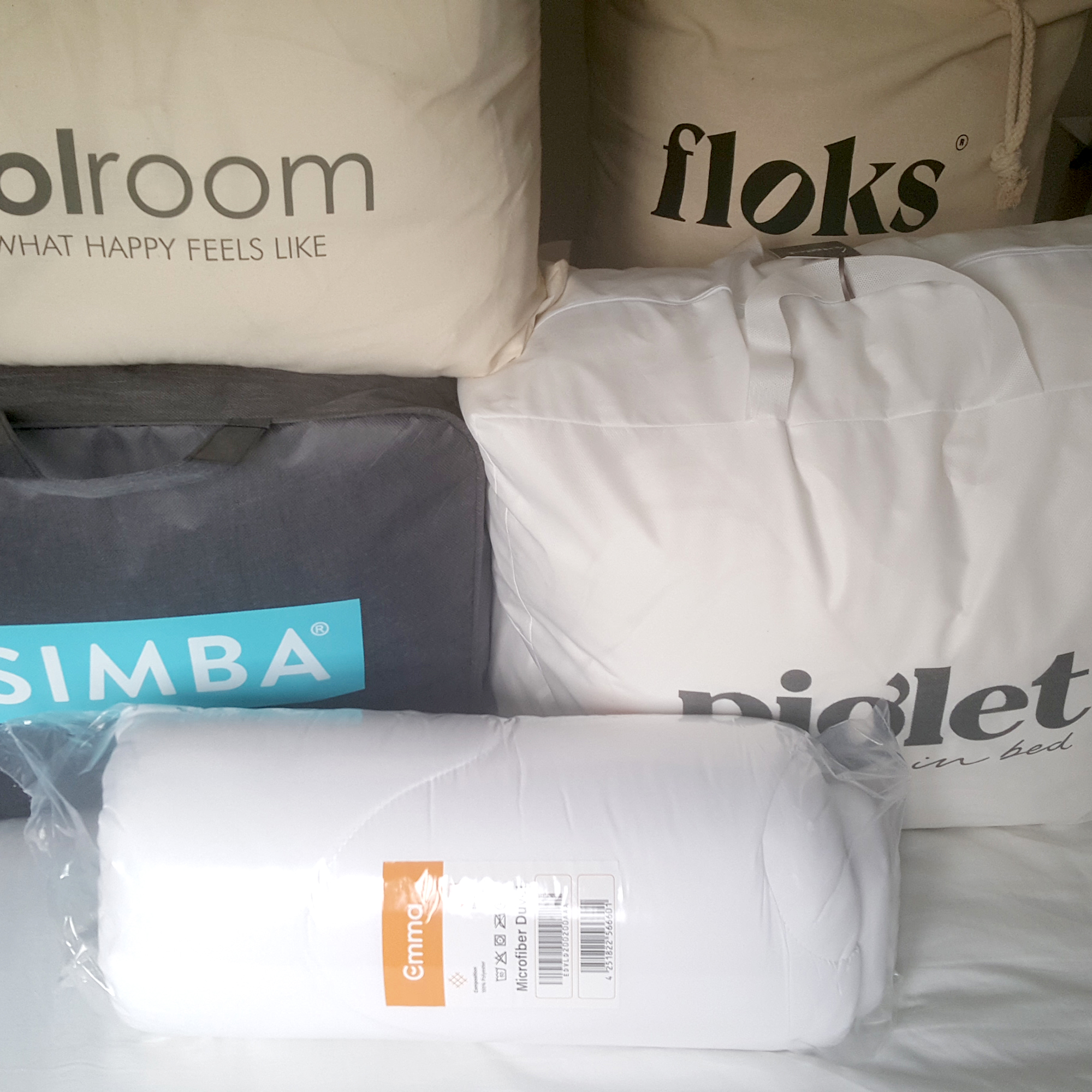
I tested each duvet with as few variables as possible. For example, I used the same duvet cover on each duvet, as well as the same mattress, mattress protector, and fitted sheet. I also ensured the bedroom temperature remained as consistent as possible during testing.
Experts, including doctors advising The Sleep Foundation and Patient Info, recommend a bedroom temperature of between 16 and 18°c for the best night's sleep, so I aimed to keep my bedroom at 17°c during the night, apart from when testing the summer duvets.
Because these duvets are in regular rotation on my bed, I've also been able to see how they perform in hot and cold weather throughout the seasons and assess how well the duvet holds up over time. Any duvets that flatten, clump, or start releasing feathers or down are promptly removed from this round-up.

Where possible, I've also thoroughly researched third-party customer reviews to see what other owners have to say about their sleep experience. All the duvets included in this guide regularly get 4-5 star reviews from customers.
And finally, I considered each duvet's price point. Having tested multiple duvets and discovered for myself the difference in quality between a £50 and a £200 duvet, I believe the options I've included in this guide are each worth their investment.
Many of the premium duvets in my shortlist can be snapped up for cheaper than their usual RRP when bedding deals are in full swing. However, I've also included the best affordable duvets I've tested within each category as a budget-friendly alternative.

I'm Amy, and as Ideal Home's Sleep Editor I've spent the last four years testing sleep products by night and sharing my findings with our readers by day. That includes sleeping under more than 25 different duvets on my own bed to find the best-in-class. All in all, that's over 10,000 hours of at-home duvet testing under my belt!
Best duvet brands
Having tested them all, here are my top recommendations for the best duvet brands to shop:
Dunelm: affordable synthetic and feather and down duvets
John Lewis: budget synthetics, mid-range feather and down, and premium wool duvets
M&S: affordable synthetic and feather and down duvets with a focus on ease of care
scooms: premium feather and down duvets
Soak & Sleep: great quality and good value premium duvets of all fill types
The White Company: premium feather and down duvets
Woolroom: great mid-range and washable wool duvets
How to choose the best duvet
Spend some time looking for a new duvet and you'll soon realise there are a whole host of options available. To help you choose the best duvet for your needs (and therefore get better sleep) I've broken down the basics of duvet shopping below, from understanding duvet tog ratings to working out what duvet filling is best for you.
How to choose the best duvet filling
Duvets come with a variety of different fillings, all of which offer different pros and cons. The best duvet filling for you will depend on a variety of factors. I've broken down the main advantages and disadvantages of the most common duvet fillings – wool, polyester, and feather and down – below.
View more ↓
Wool: If you want a duvet with great temperature regulation (that means it can keep you warm in the winter and cool in the summer), then a wool-filled duvet is your best choice.
Wool's excellent temperature regulation also makes it a brilliant choice if you share a bed with someone with a different inner thermostat to you – unlike other fillings, wool has less chance of leaving one person shivering whilst the other overheats.
Plus, wool is also the most breathable and humidity-wicking duvet filling, so it's perfect for hot sleepers or those prone to night sweats. Even better, a wool-filled duvet is also one of the most eco-friendly choices you can make, as wool fibres are renewable and biodegradable.
The downsides are that a wool duvet tends to be expensive, and many of them can't be washed easily. A wool duvet also won't be vegan-friendly.
View more ↓
Feather and down: Long thought of as the Holy Grail of duvet fillings, a feather and down duvet with a high ratio of down to feathers creates a plump, squishy, and super luxurious feeling duvet.
Hungarian goose feather and down duvet filling is the most premium mix – the high-end options I've tested, with a ratio of 90% down to 10% feathers feel as light as a cloud. These are definitely the duvets you want if you want that super luxe boutique-hotel bedding experience, but they're not without problems of their own.
A feather and down duvet is usually a little trickier to wash and can take longer to dry than a synthetic option. And, although feather and down offers great insulation so it's perfect for cold sleepers, a hot sleeper may find the filling isn't as breathable as a wool-filled duvet.
A good quality feather and down duvet is also one of the most expensive options out there. A more affordable alternative is opting for duck feather and down over goose, but, in my experience, cheaper feather and down duvets tend to be made with a high feather ratio and can often feel a little lumpy. Budget options can also leak feathers all over your bedroom, especially seeing as a feather and down duvet requires regular shaking to redistribute the filling.
Plus, sourced from either duck or goose on an industrial scale, this filling can raise concerns about animal cruelty and won't be the right option for vegans. Always look for fill that is certified to be a by-product of the food industry, with Downpass or Downafresh accreditation that denotes ethically sourced and traceable feather and down.
View more ↓
Synthetic: If you want a budget-friendly duvet, a duvet that's easy to wash and dry, or you're vegan, then you may prefer a synthetic duvet, commonly referred to as a 'microfibre' or 'hollowfibre' duvet.
A hollowfibre duvet tends to be the cheapest option. Its dense fill tends to sleep warm so it can be an affordable option for a cold sleeper, but hollowfibre can feel clumpy and not tuck around the body that well. The dense polyester fill is also the most likely to cause overheating, as this filling lacks breathability.
A microfibre duvet is the more premium of the synthetic options, and often compared to the feel of feather and down (although it doesn't *quite* offer the same luxurious feel, in my experience). This polyester filling is combed finer, so a microfibre duvet feels lighter and more malleable than a hollowfibre duvet. It also tends to have better breathability than hollowfibre as there are more air pockets, although if you're a hot sleeper, microfibre is still more likely to make you overheat than wool.
As well as being affordable, synthetic duvets can be machine-washed and, generally, can be tumble-dried. So they're a great option if you want an easy-care duvet you can clean and have back on the bed the same day.
However, neither synthetic duvet filling isn't usually good news for the environment as polyester is made from non-renewable petroleum-based resources. That's why it's important to look for a duvet made with recycled polyester where possible. And, no matter how it's made, most synthetic duvets are non-biodegradable at the end of their lifespan, and can contribute to polluting landfill.

How to choose the best duvet tog
Duvet tog is a measure of how effectively a duvet insulates heat and therefore how warm it will keep you during the night. Duvet tog ratings range from 1 tog to 15 tog, with higher numbers offering more warmth.
Although you can get duvets in almost any tog rating, the most common togs are 4.5 tog, which makes a great summer duvet, 10.5 tog, which tends to be the best bet for autumn and spring, and 13.5 tog, which offers good winter warmth.
You might also want to consider an 'all-season' duvet. This consists of two separate lighter tog duvets that can be joined together (usually by way of press studs) to make a warmer winter duvet.
Most commonly, an all-season duvet will include a 4.5 tog and 9 tog duvet that can create a 13.5 tog duvet once combined, or a 4.5 tog and 10.5 tog duvet that will create a warmer 15 tog combination.
Wondering when to make the switch from a lower to a higher tog duvet? Our guides on when to switch to a summer duvet and when to switch to a winter duvet have the answers.

How to choose the best duvet size
We might think that we should match our duvet size to our mattress size, however, I recommend sizing up your duvet, especially if you sleep with a partner.
Opting for a duvet that's one size up from your mattress will prevent one partner hogging the duvet at night, and keep you both warmer in bed by offering enough fabric to tuck around both your bodies rather than the duvet tenting between you both and allowing in draughts.
That means if you have a double bed, opt for a king-size duvet, and if you have a king-sized bed, opt for a super king duvet.
| Header Cell - Column 0 | Size (cm) | Size (approx. inches) |
|---|---|---|
Single duvet | 135 x 200cm | 53" x 79" |
Double duvet | 200 x 200cm | 79" x 79" |
King duvet | 230 x 220 cm | 91" x 87" |
Super king duvet | 260 x 220cm | 102" x 87" |
Emperor duvet | 290 x 235 cm | 114" x 93" |
FAQs
What's the best type of duvet to buy?
The best type of duvet to buy depends on your individual needs. For instance, if you're a hot sleeper or you share a bed with someone who's always cold when you're too warm, a wool-filled duvet will be the best choice as wool offers excellent temperature-regulation and breathability. This means wool will create a mini micro-climate around each sleeper, which can result in better sleep.
If you're a cold sleeper or you want a light and airy duvet that feels super luxurious and squishy, feather and down will be the best type of duvet fill for you.
If you need a duvet that's affordable and easy to care for, or you're vegan, a synthetic microfibre duvet will be the best choice.
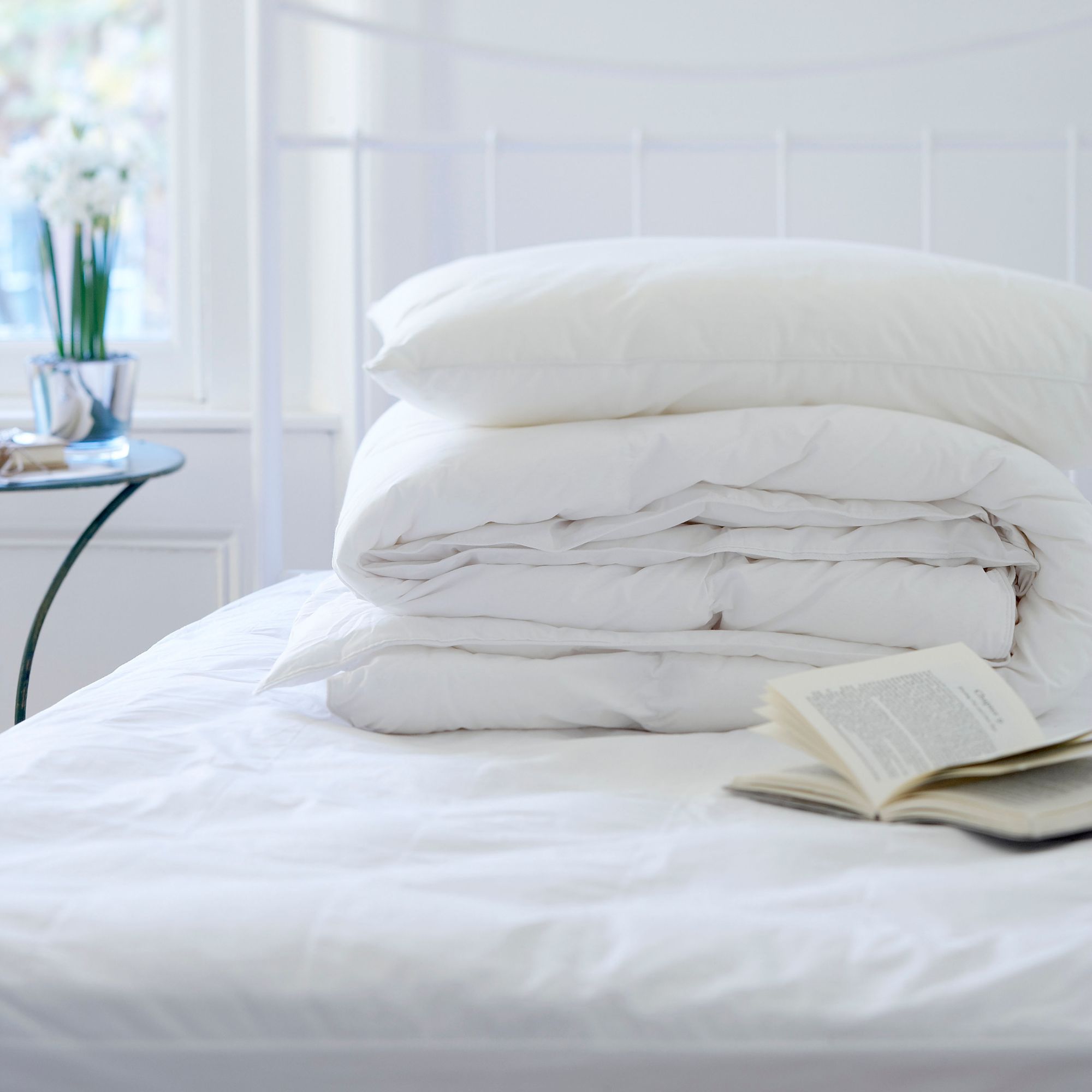
What's the best all year round duvet?
If you want to invest in one duvet that will keep you warm without overheating all year round, I recommend buying the best wool duvet your budget allows. That's because wool has such good temperature regulation that it can insulate your body to keep you cosy when it's cold, but still offers great breathability, which means your body can cool down when it's hot.
If you prefer the squish of feather and down, or the ease-of-care a synthetic duvet filling offers, then look for an all-season duvet that will provide a summer and spring-autumn tog that can be used together for extra warmth in winter.
What is the best quality duvet to buy?
If you're a hot sleeper or share a bed with someone who has a different inner thermostat from you, then the best quality duvets I've tested are the Woolroom Deluxe Washable Duvet or the Floks Luxury British Wool Duvet. Both of these are premium wool duvets that offer excellent warmth, breathability, and temperature regulation.
If you're a cold sleeper and like a truly luxurious feeling duvet, then the scooms Hungarian Goose Down Duvet, Soak & Sleep 90% Hungarian Goose Down Duvet, or The White Company Hungarian Goose Down Duvet are the best quality feather and down duvets I've tested. All are very similar in design, so the best pick will be the one that has the right tog for you, or the best price when you come to sho
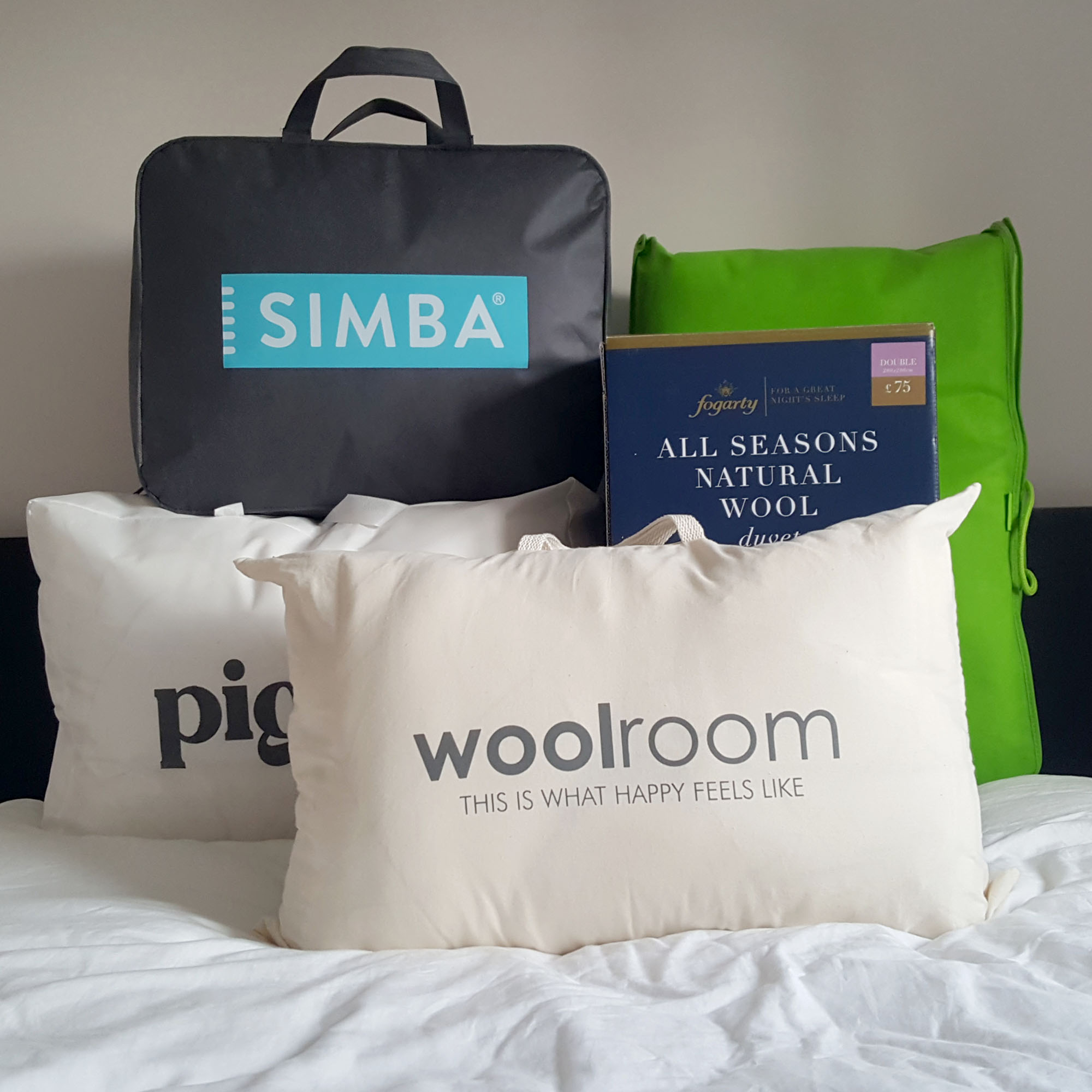
Is an expensive duvet worth it?
Having tested duvets at both ends of the price spectrum, I do now think that an expensive duvet is worth it. There are some exceptions, when a higher price point may just be paying for a well-known brand name, but generally, the more you invest, the better quality the materials, and those materials are what provide better durability, increased comfort, better temperature regulation, and ultimately lead to better sleep.
Sign up to our newsletter for style inspiration, real homes, project and garden advice and shopping know-how

Amy is Ideal Home’s Sleep Editor and the Ideal Home Certified Expert on Sleep. She's spent the last four years researching and writing about what makes for the best night’s sleep during the day and testing out sleep products to find the best-in-class by night. So far she’s clocked up over 10,000 hours of pillow, duvet, and mattress testing experience.
Our go-to for all things sleep-related, she’s slept on and under bestselling products from Simba, Emma, Hypnos, Tempur, Silentnight, Panda, and many many more.
As a hot sleeper, Amy is always on the lookout for the most breathable bedding, but she also leads a wider team of testers to ensure our product testing encompasses both hot sleepers, cold sleepers, front sleepers, back sleepers, side sleepers, and everything in-between.
